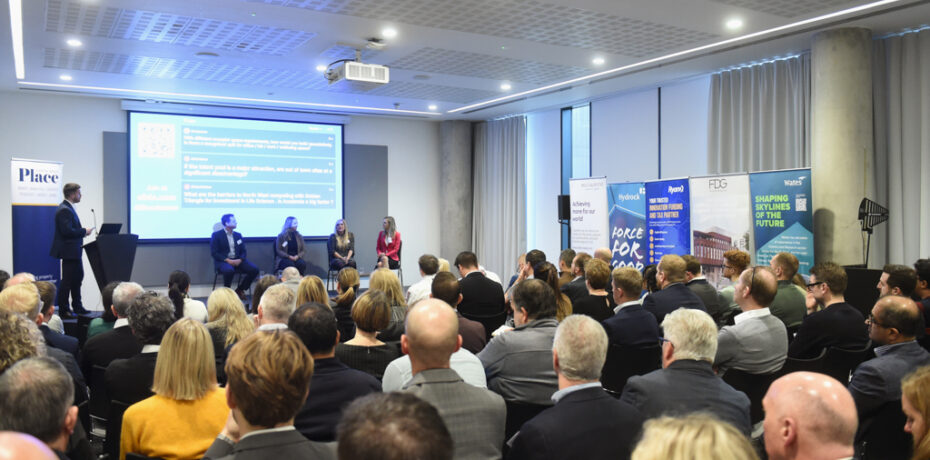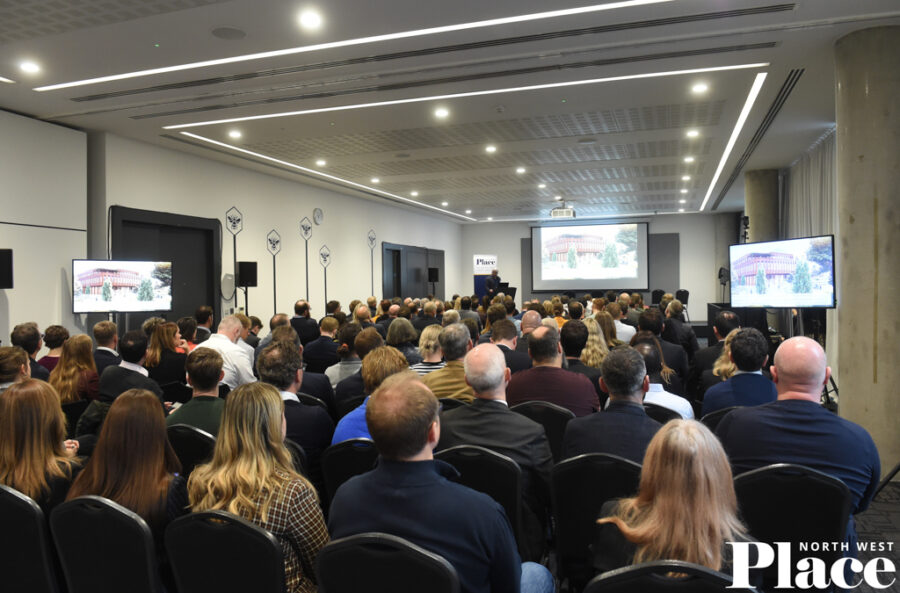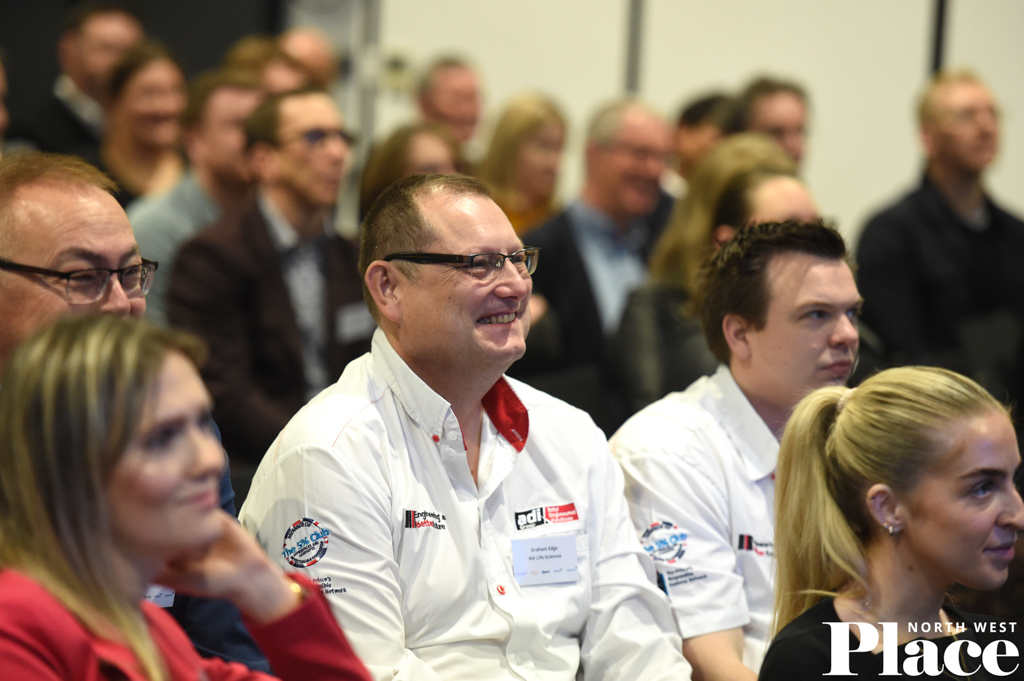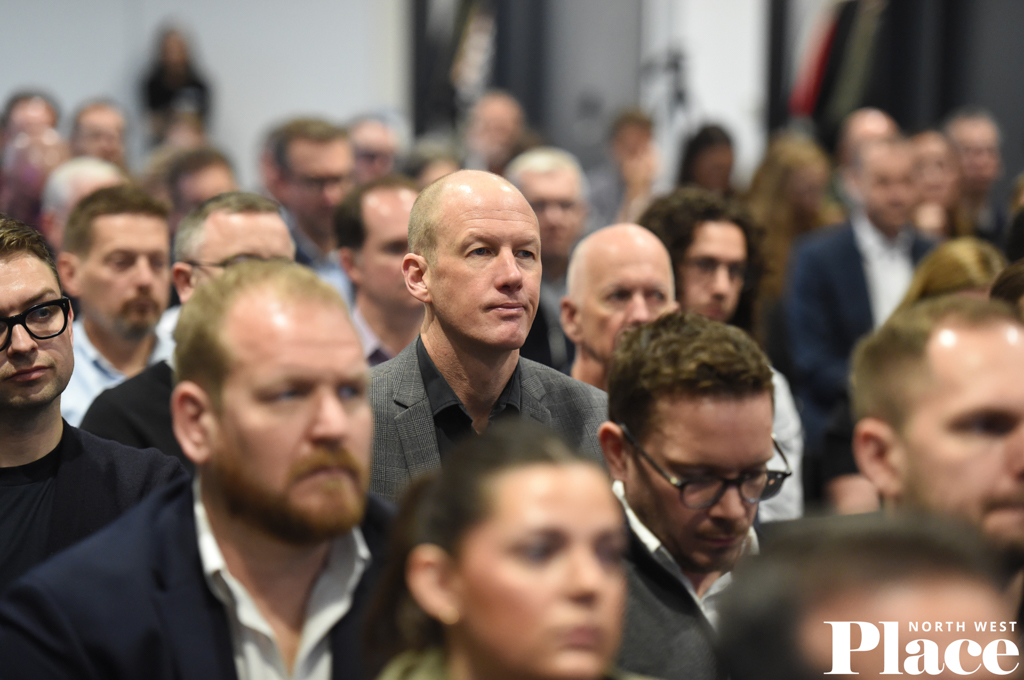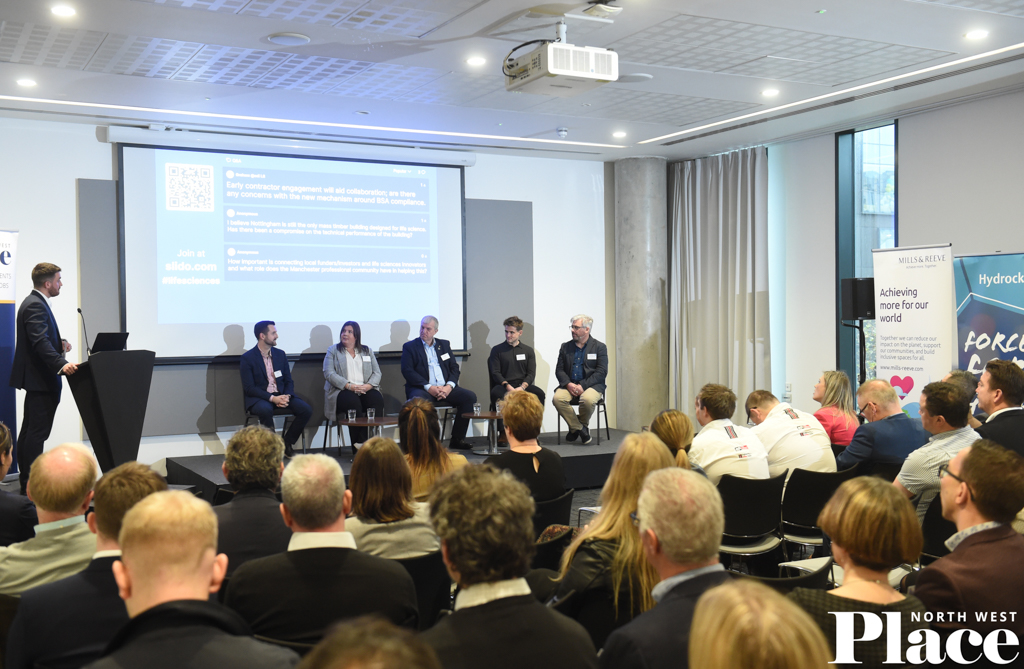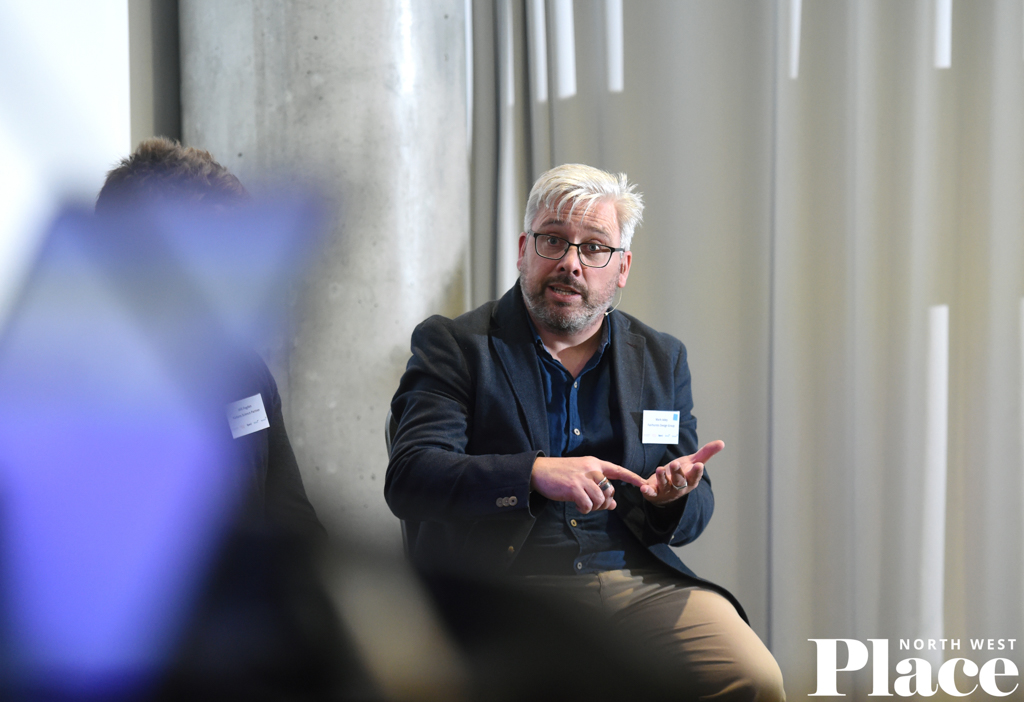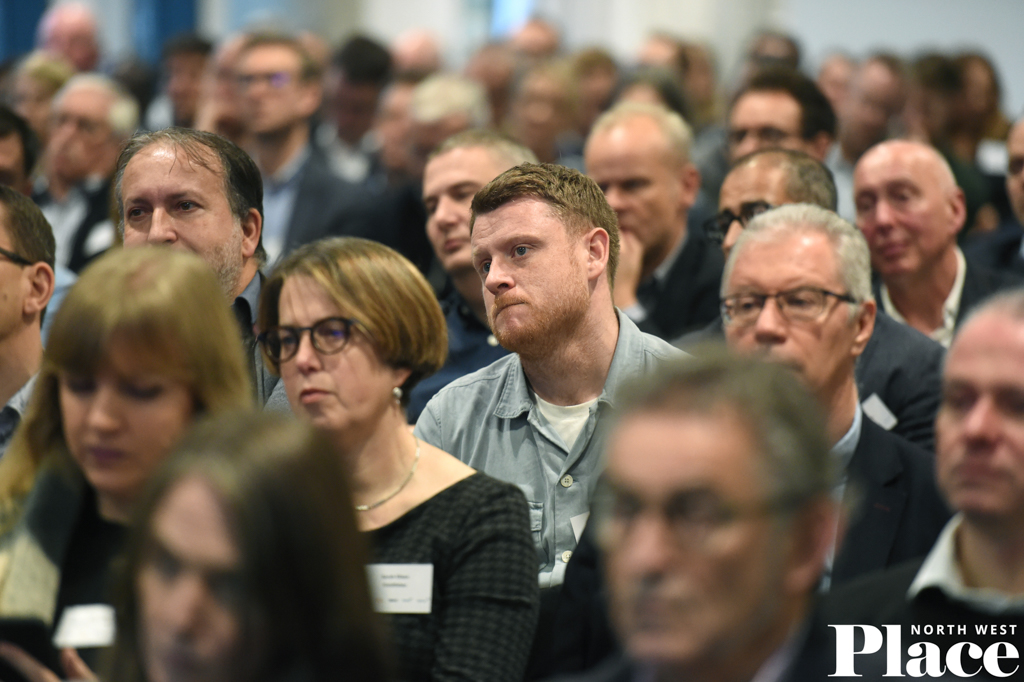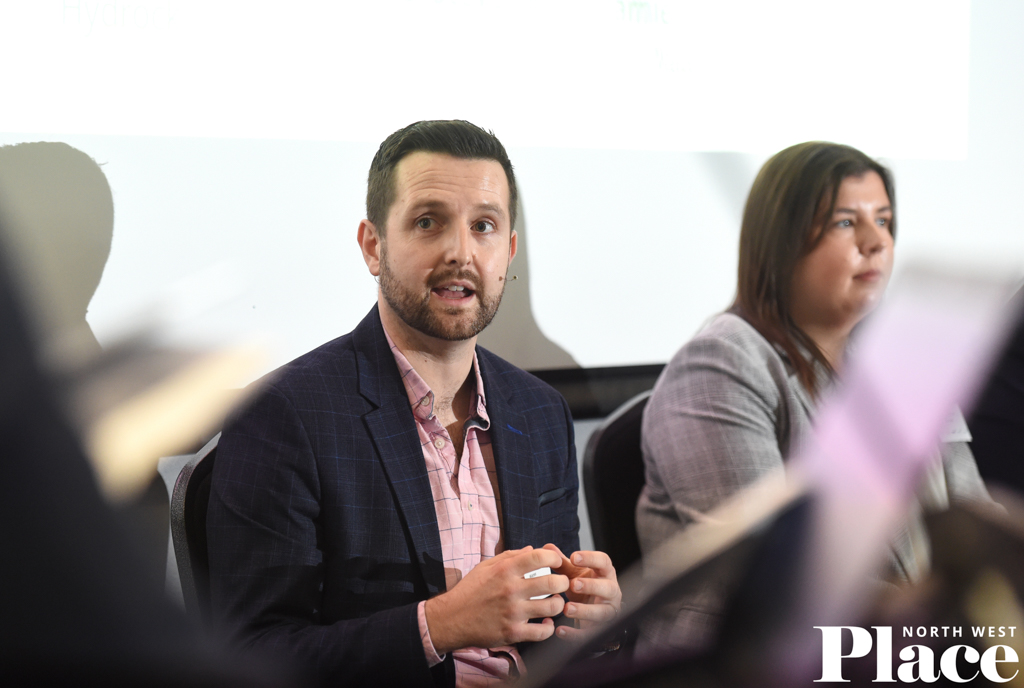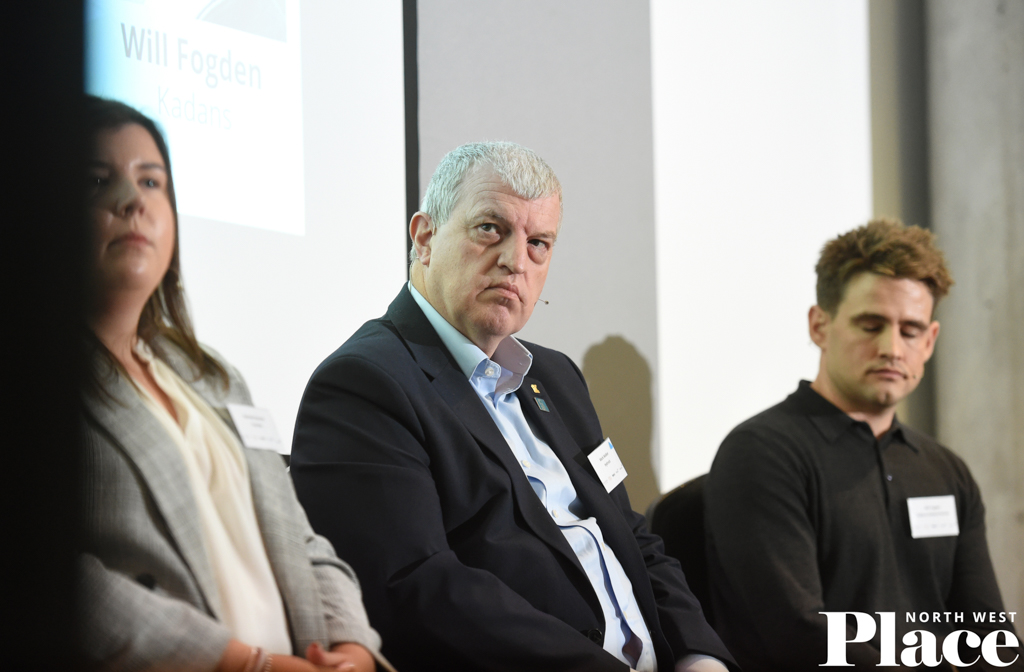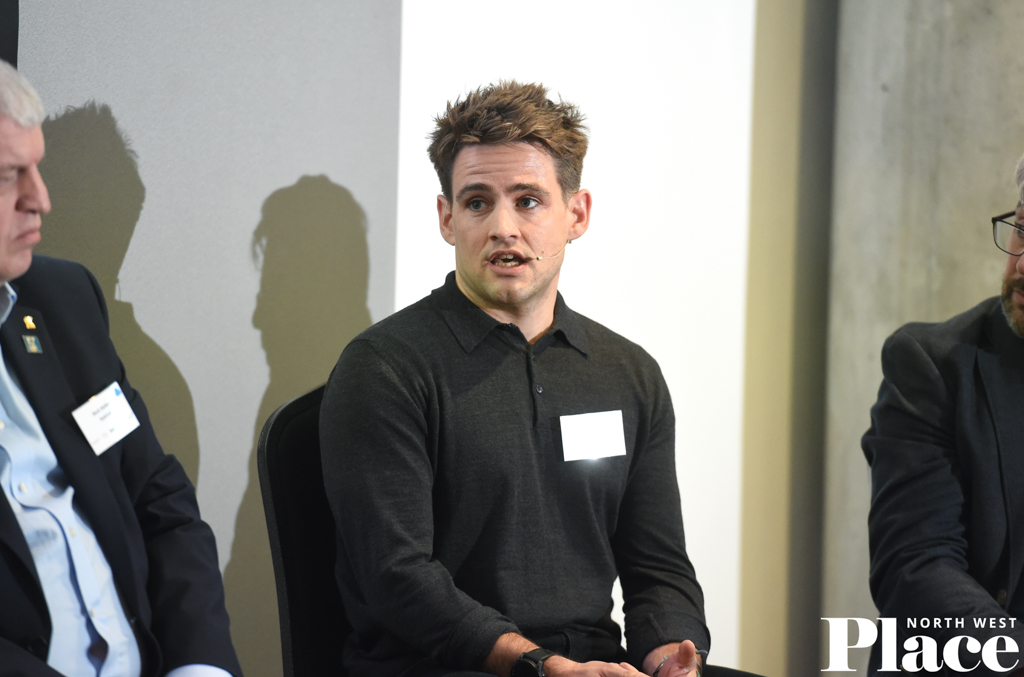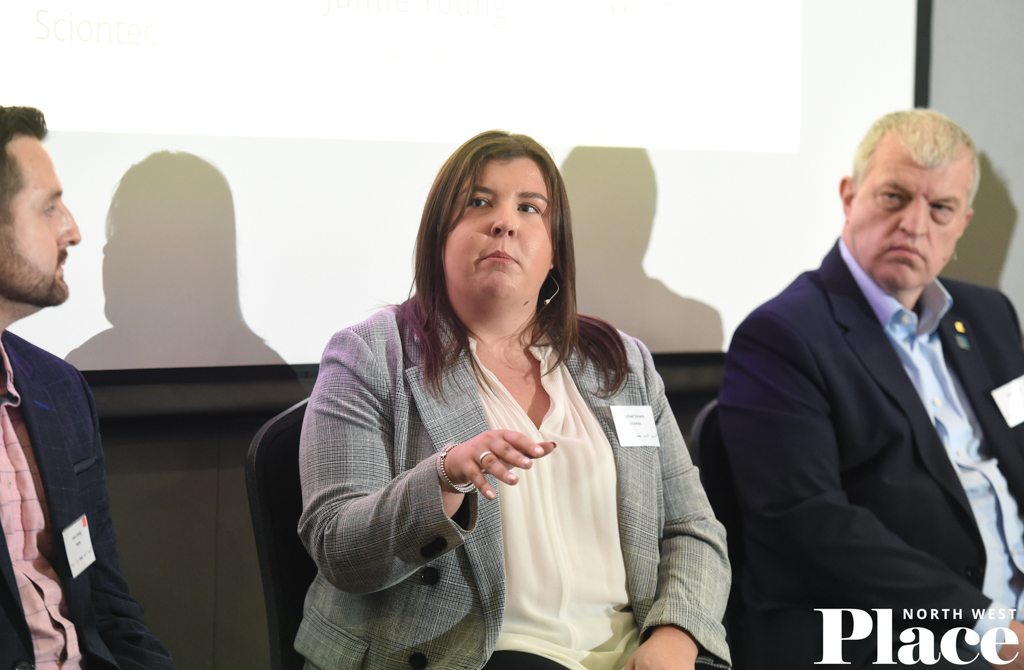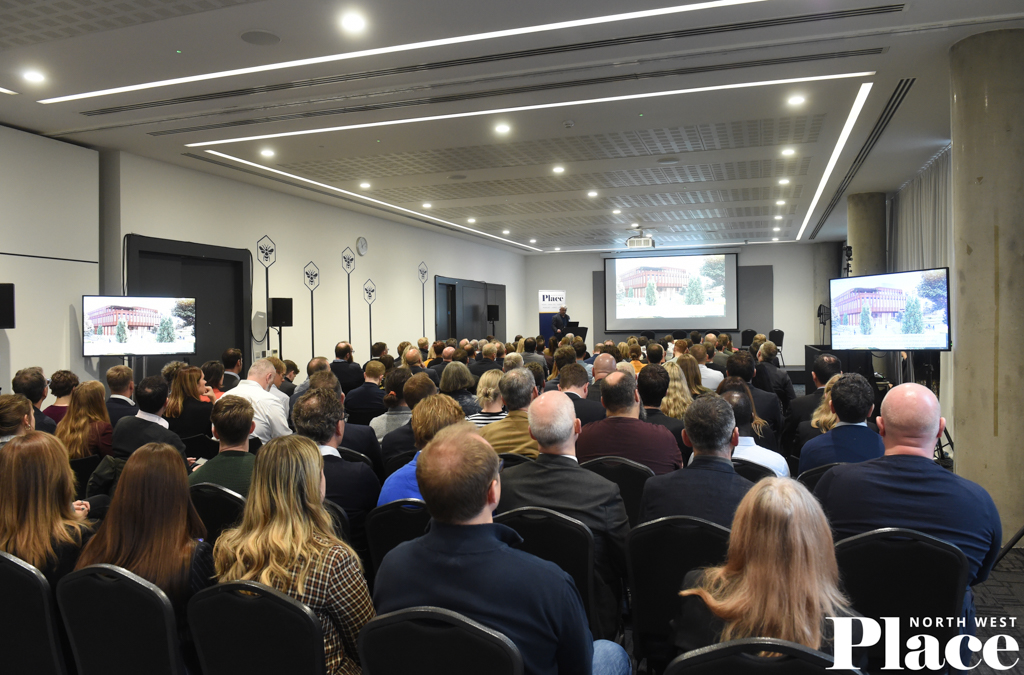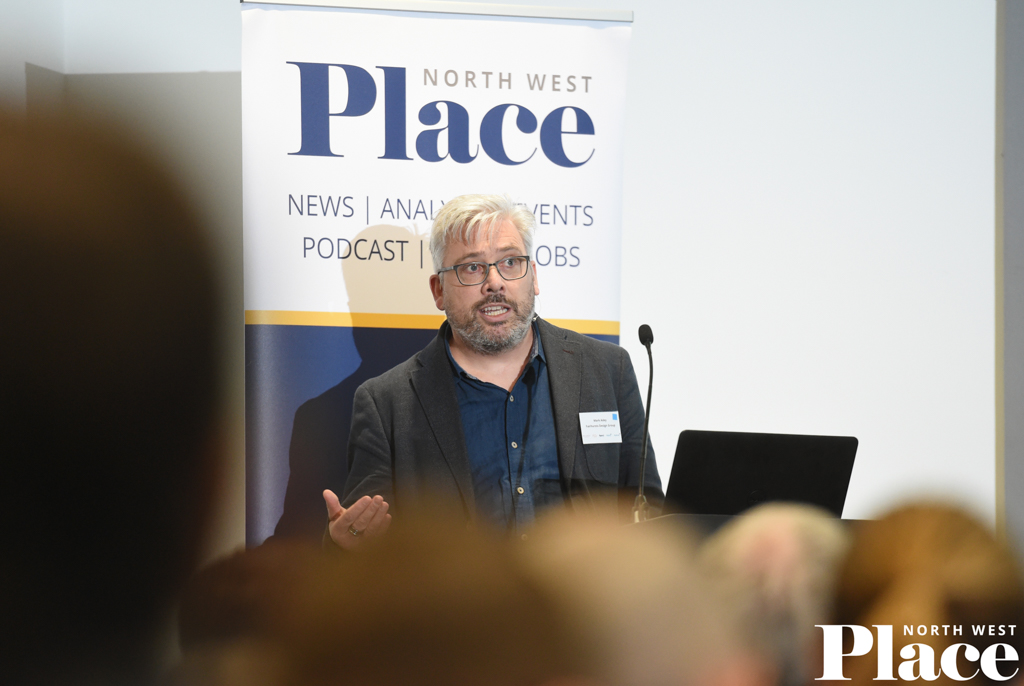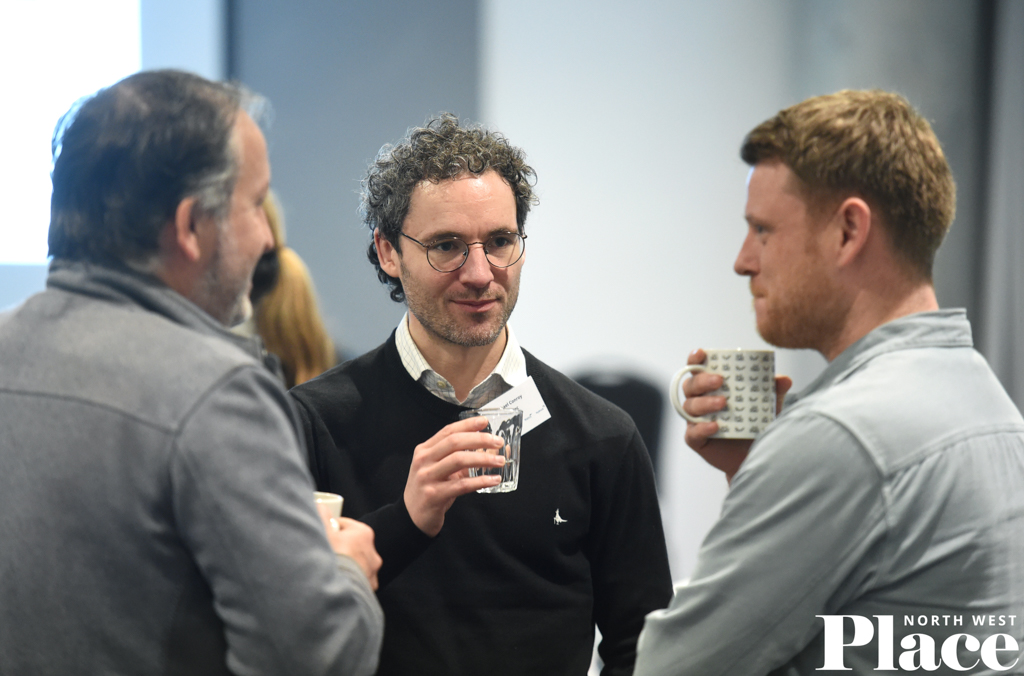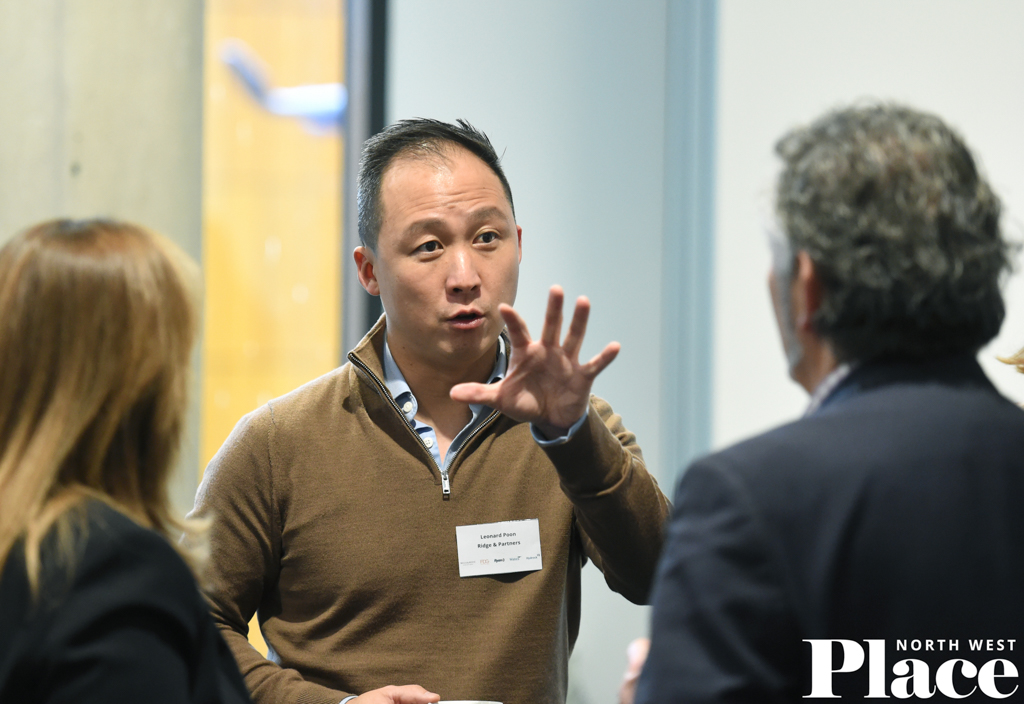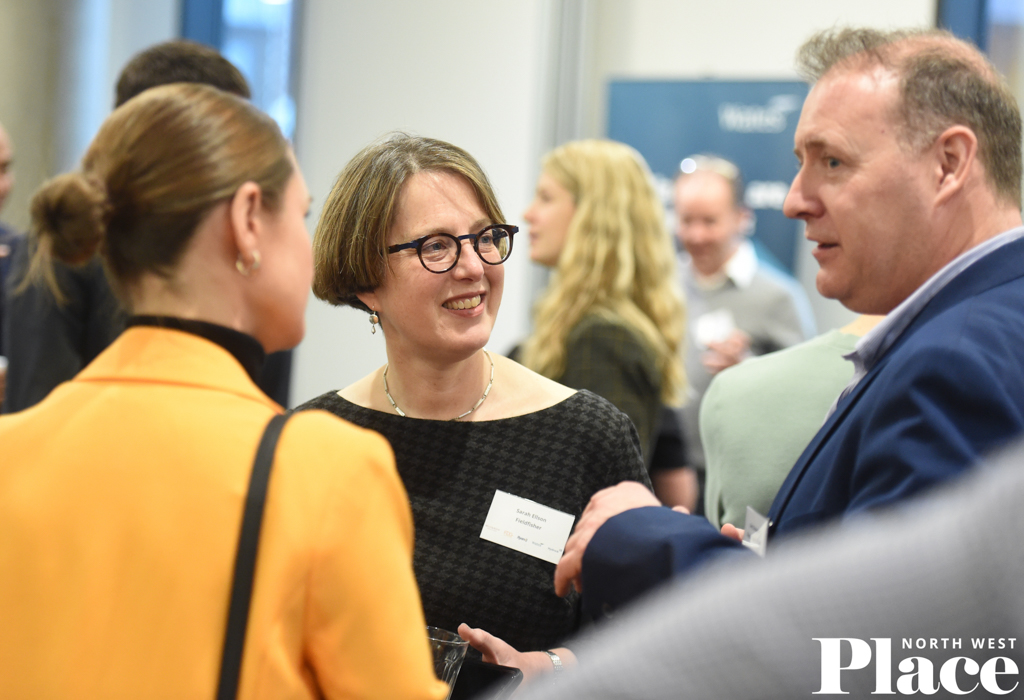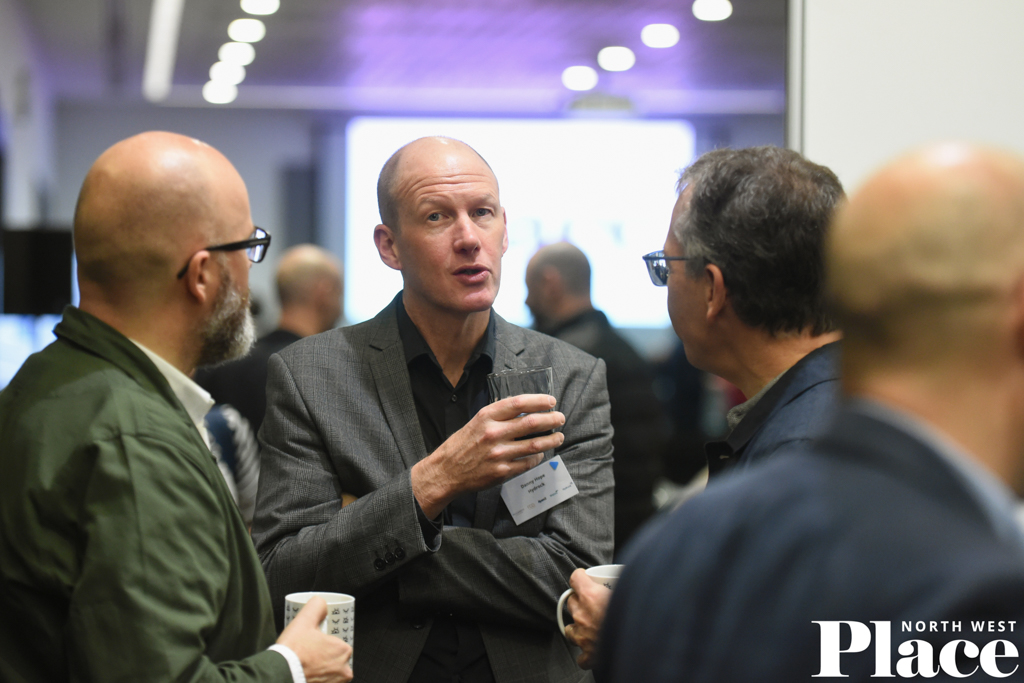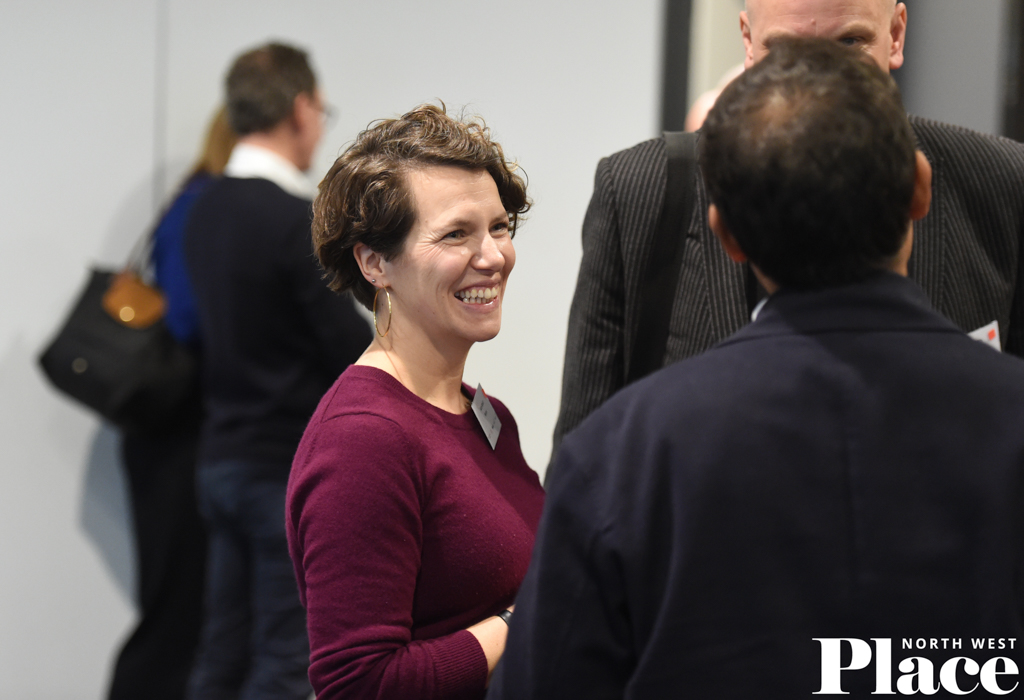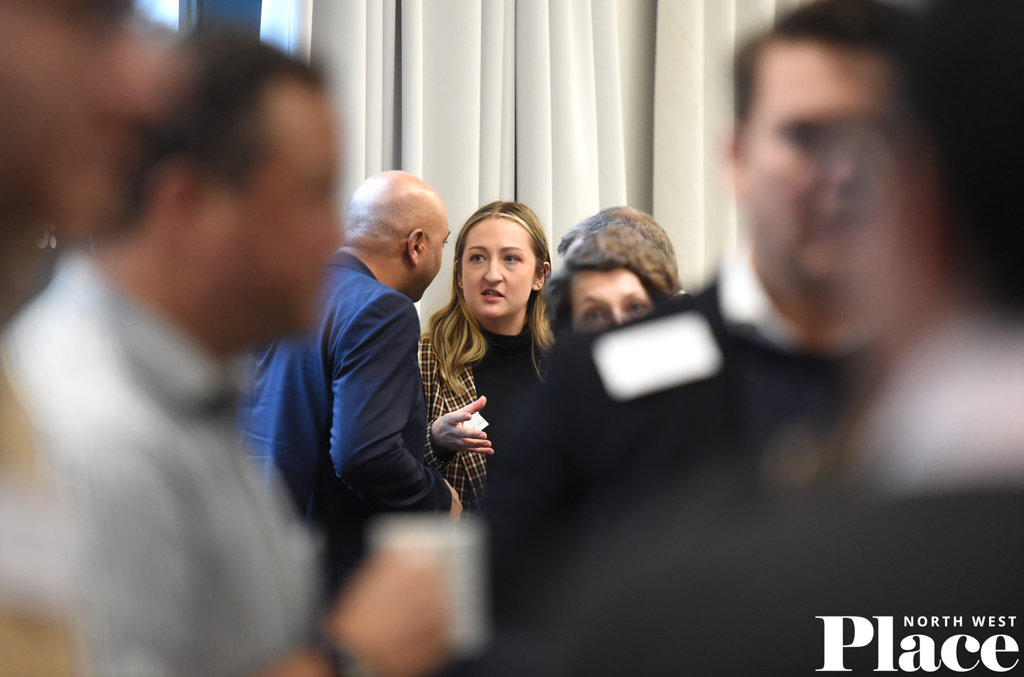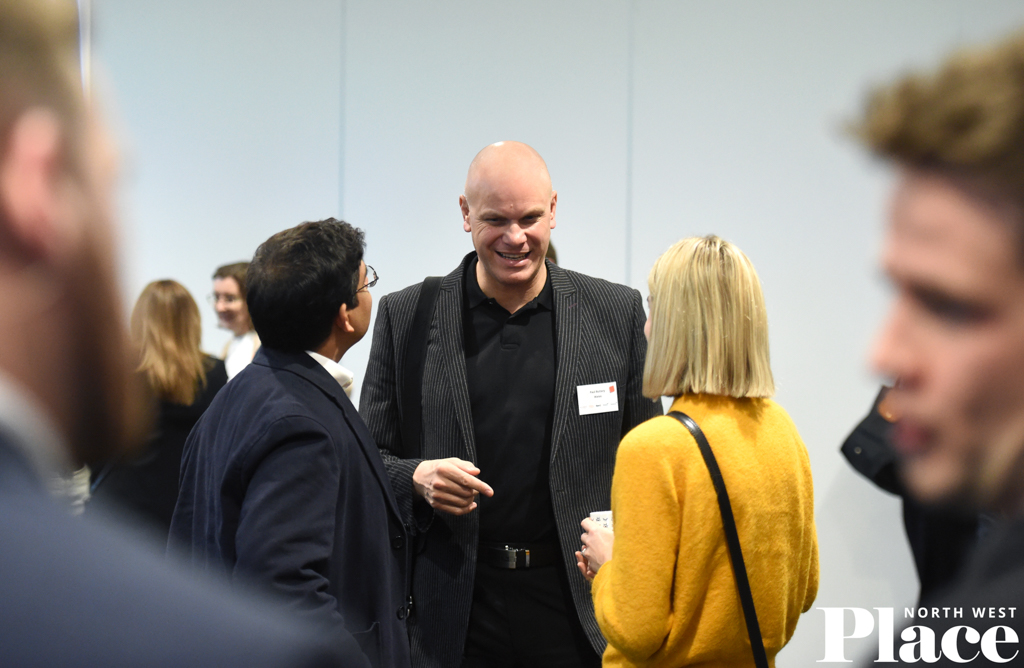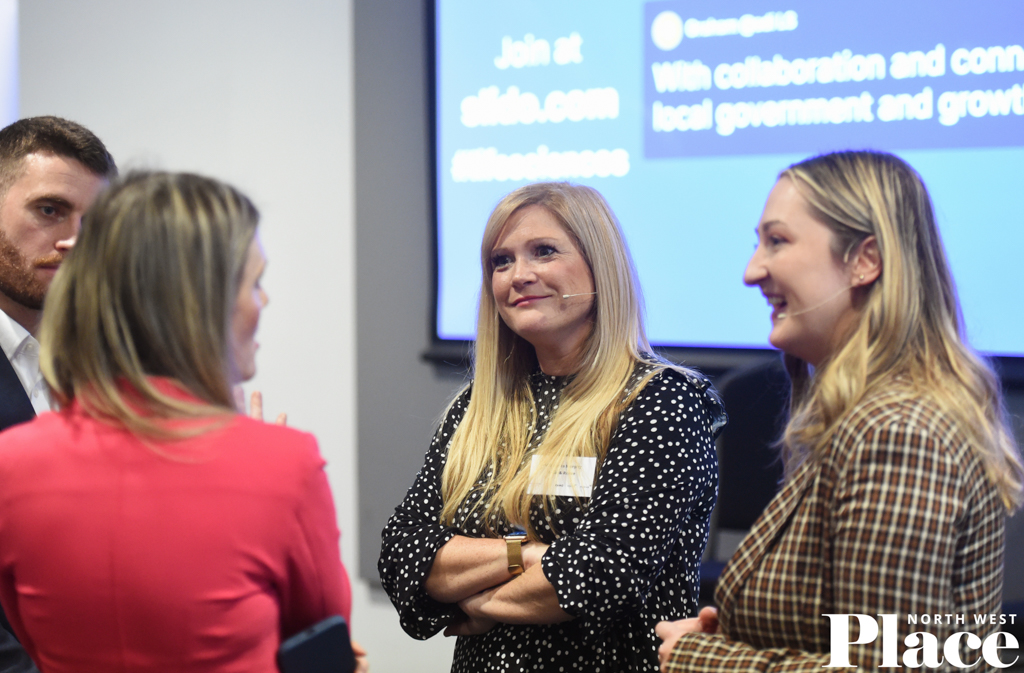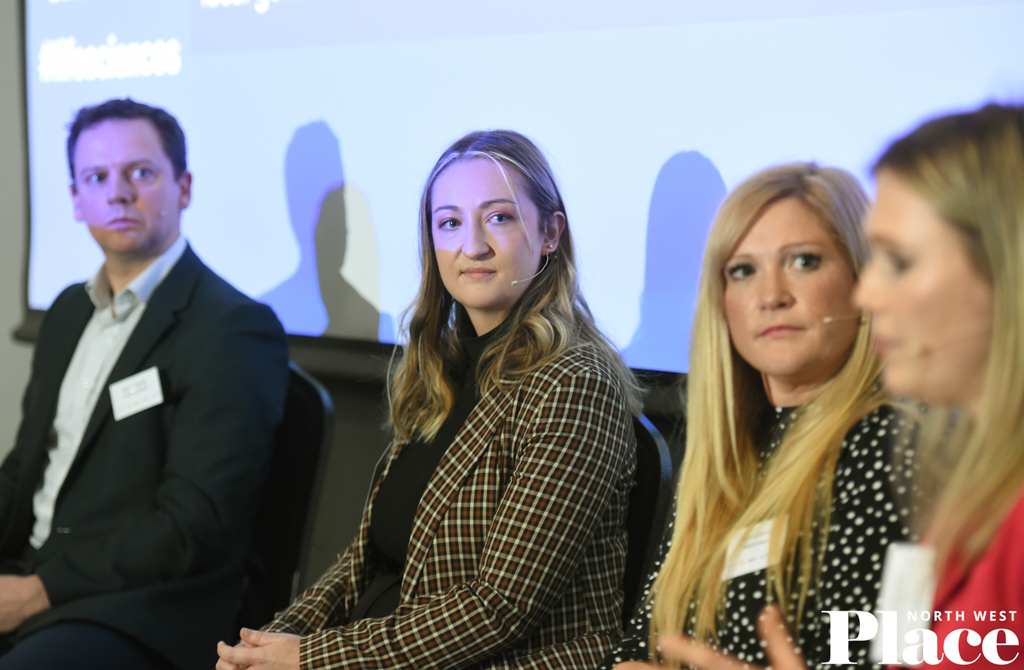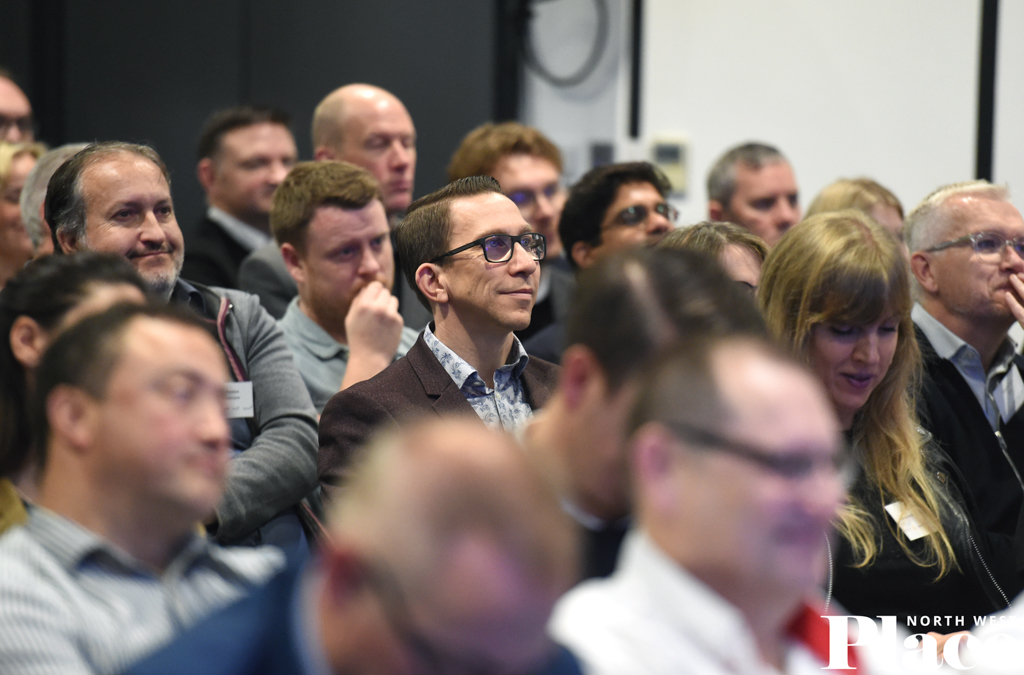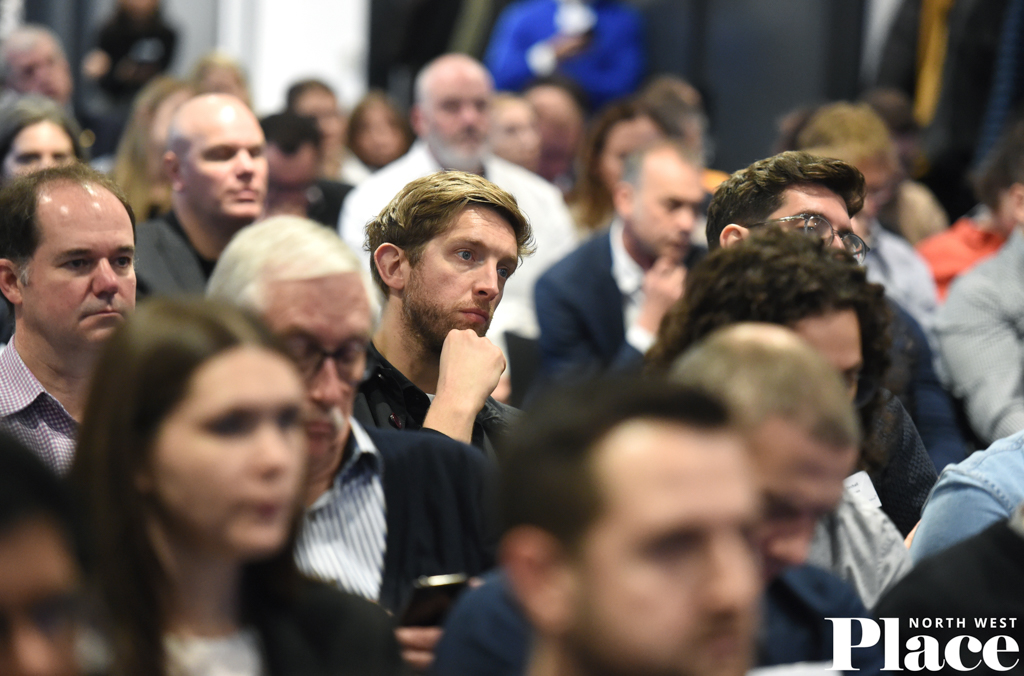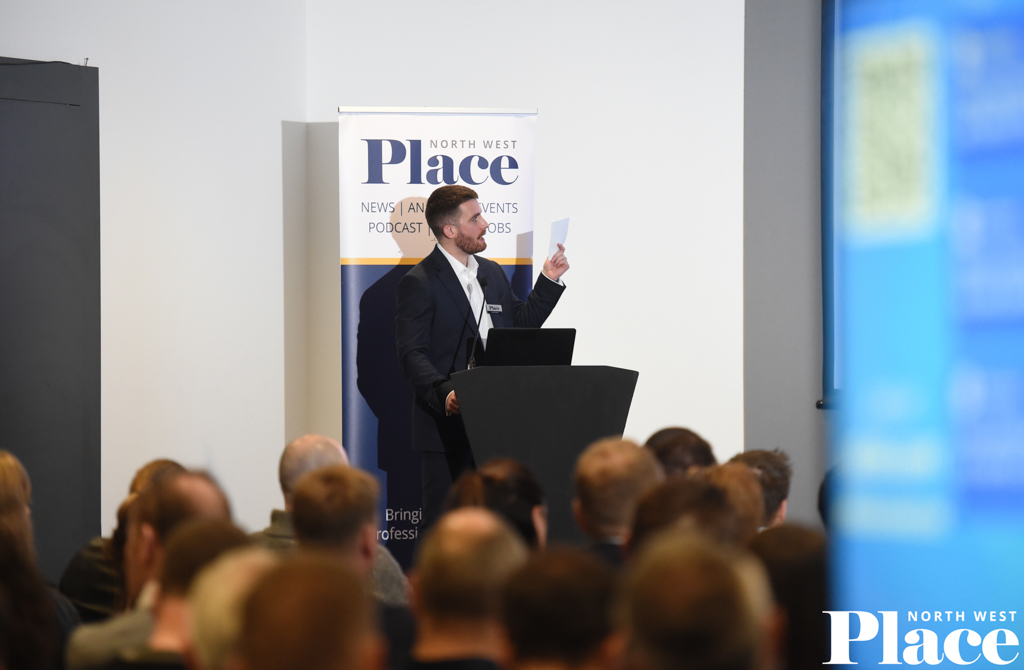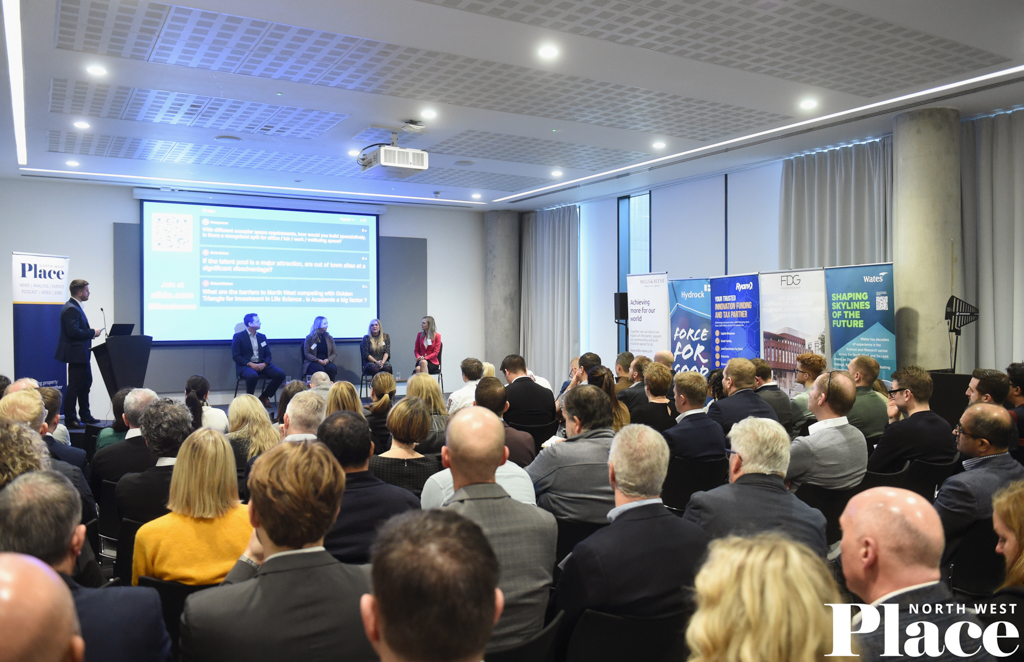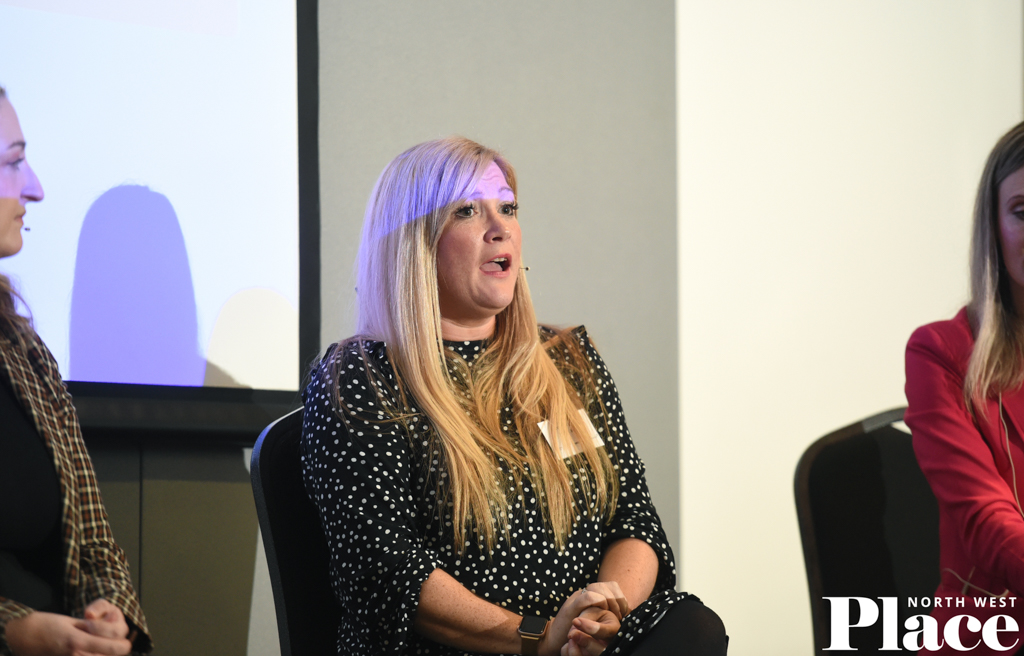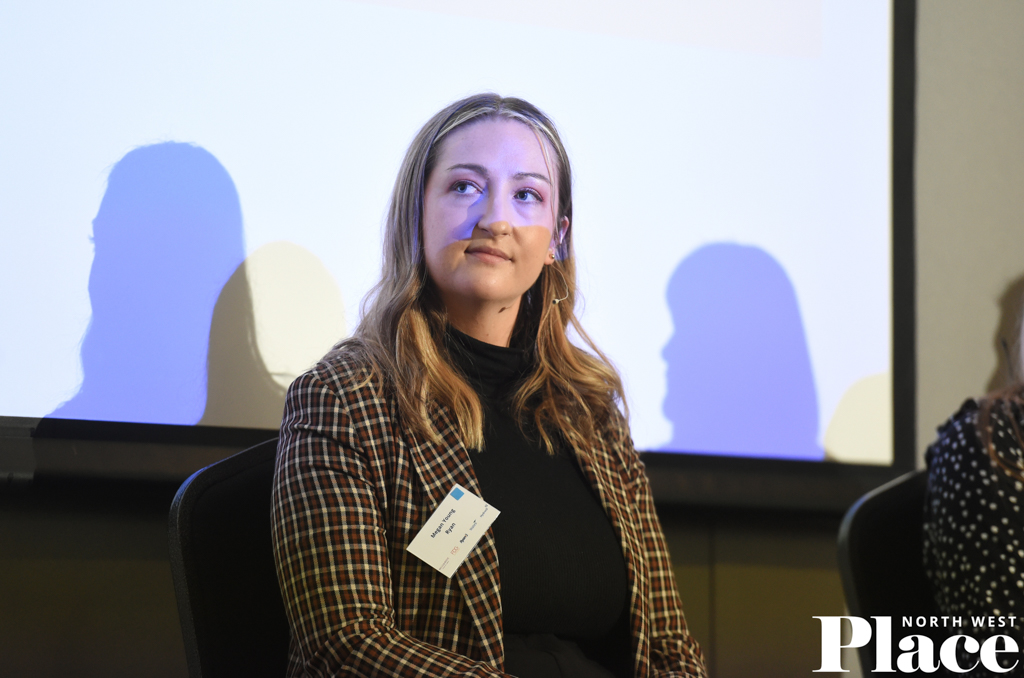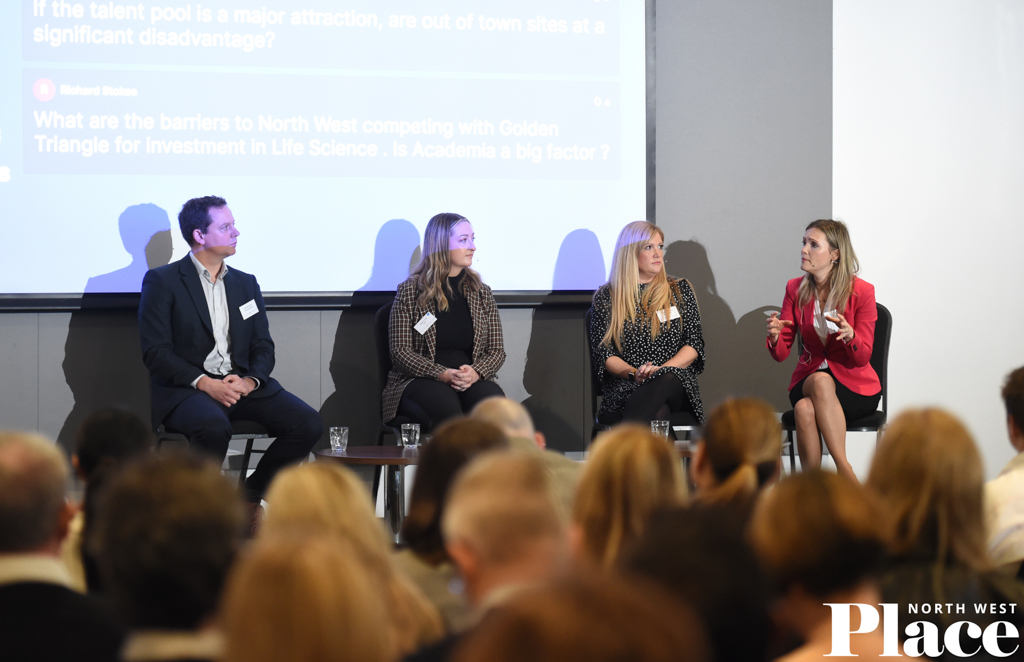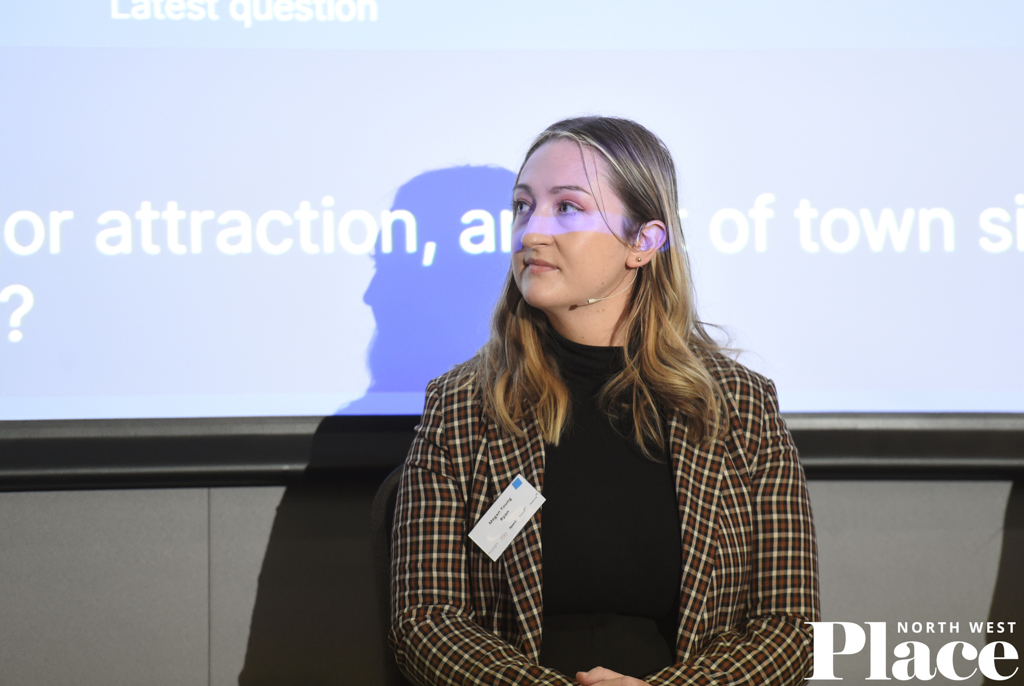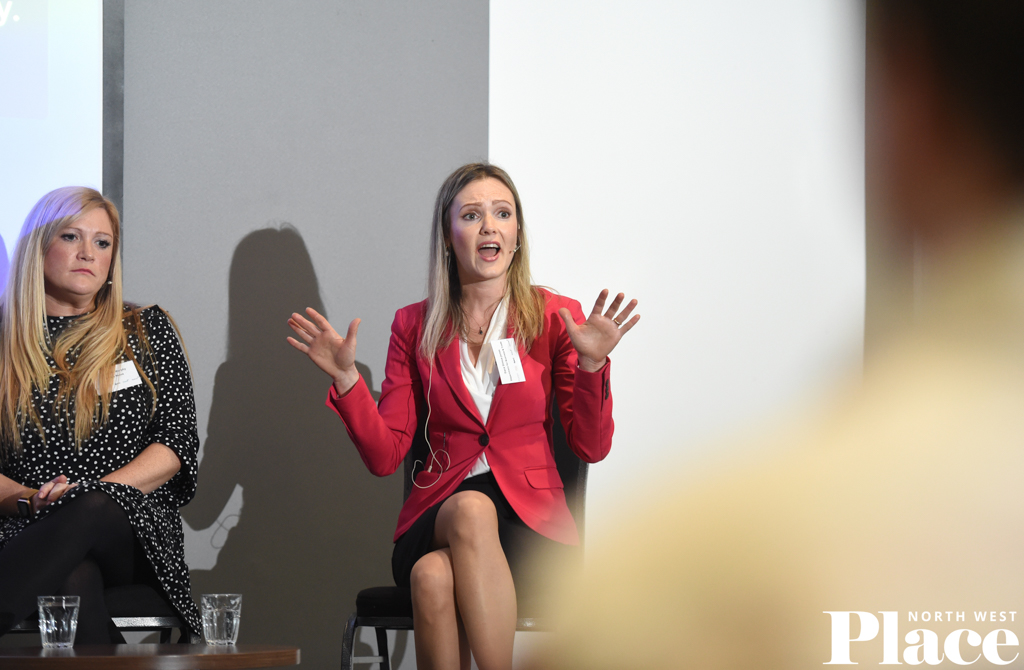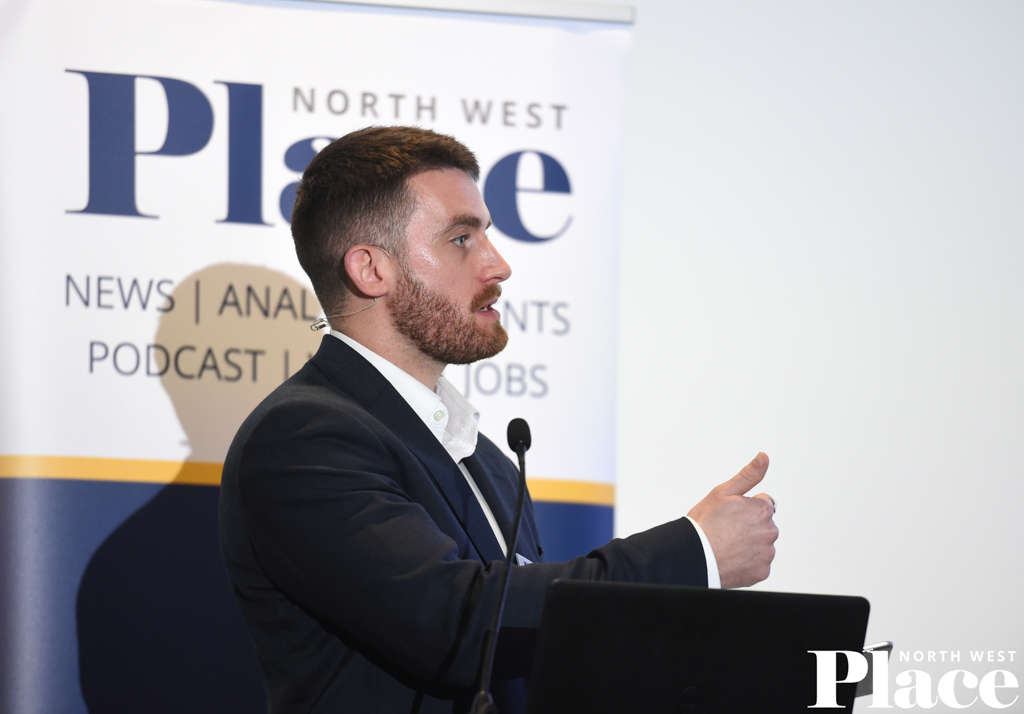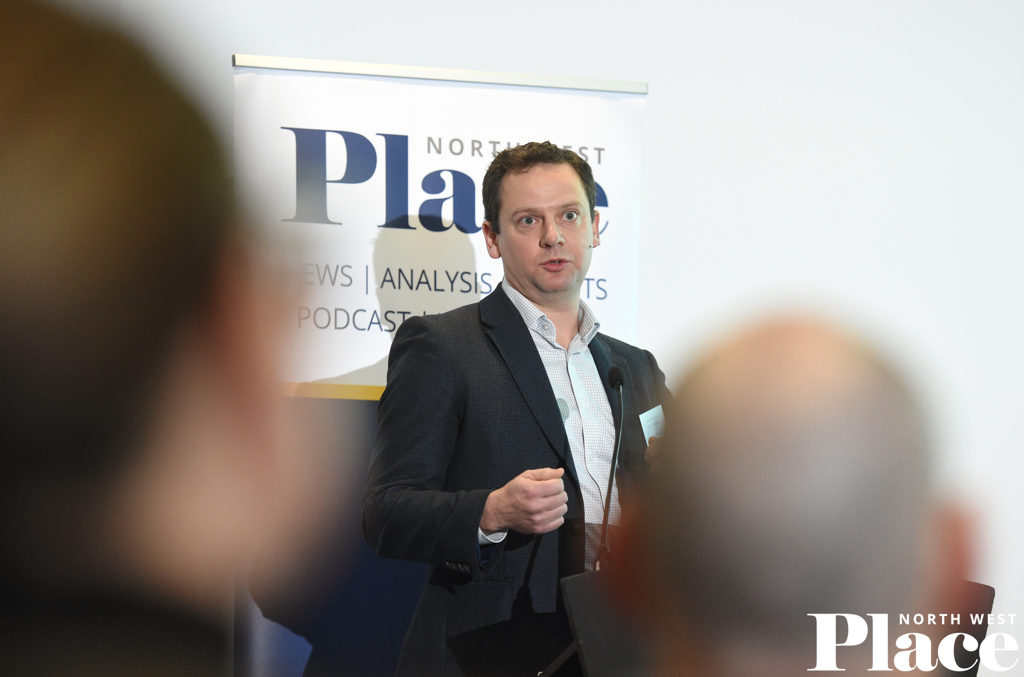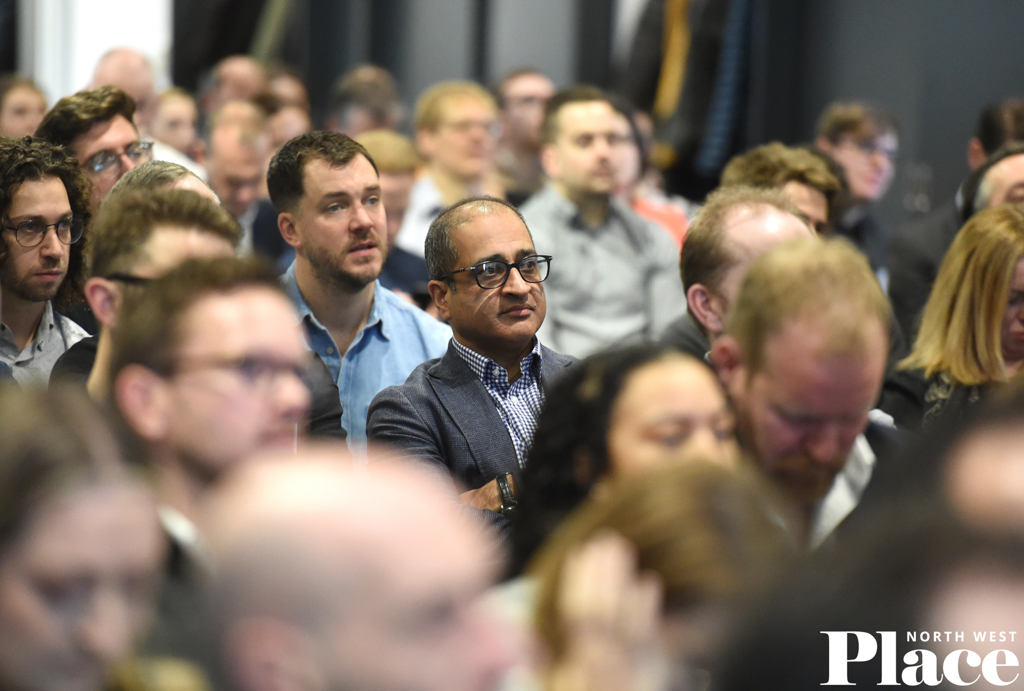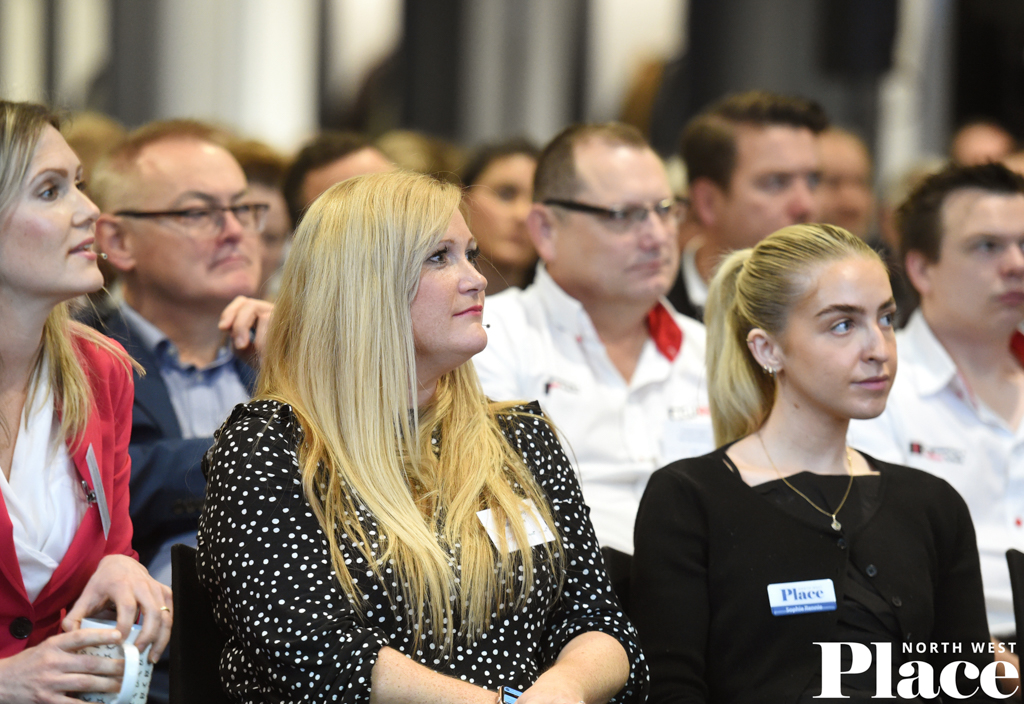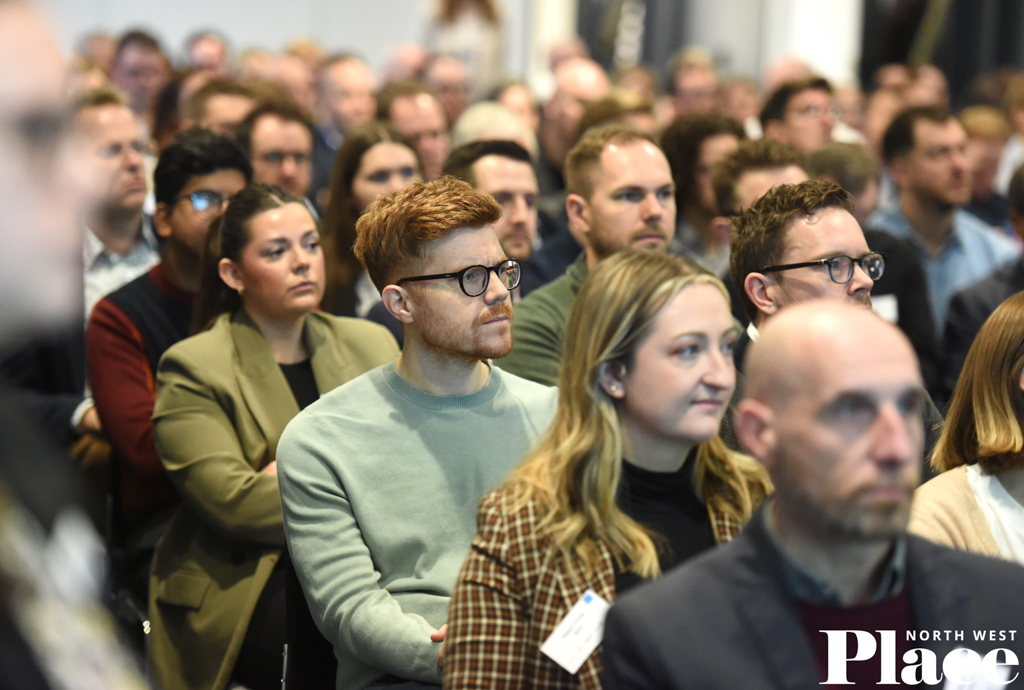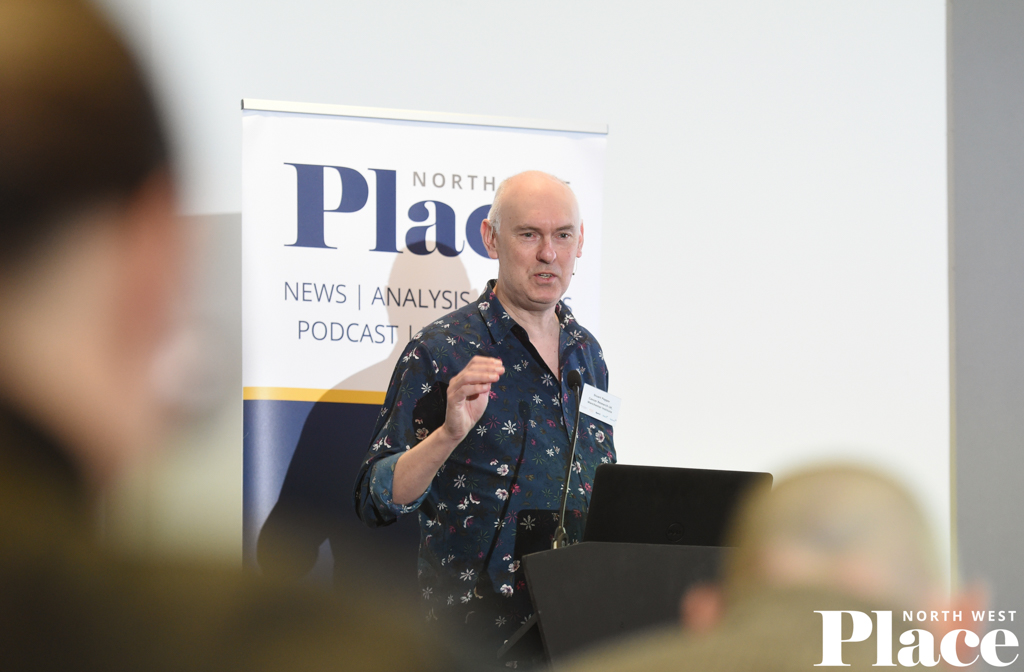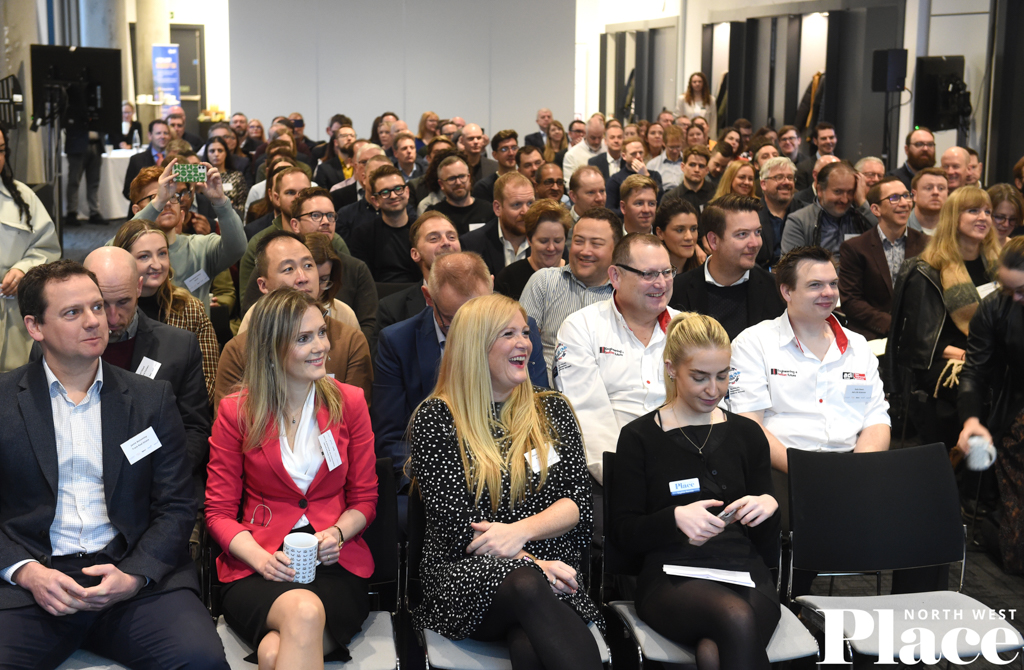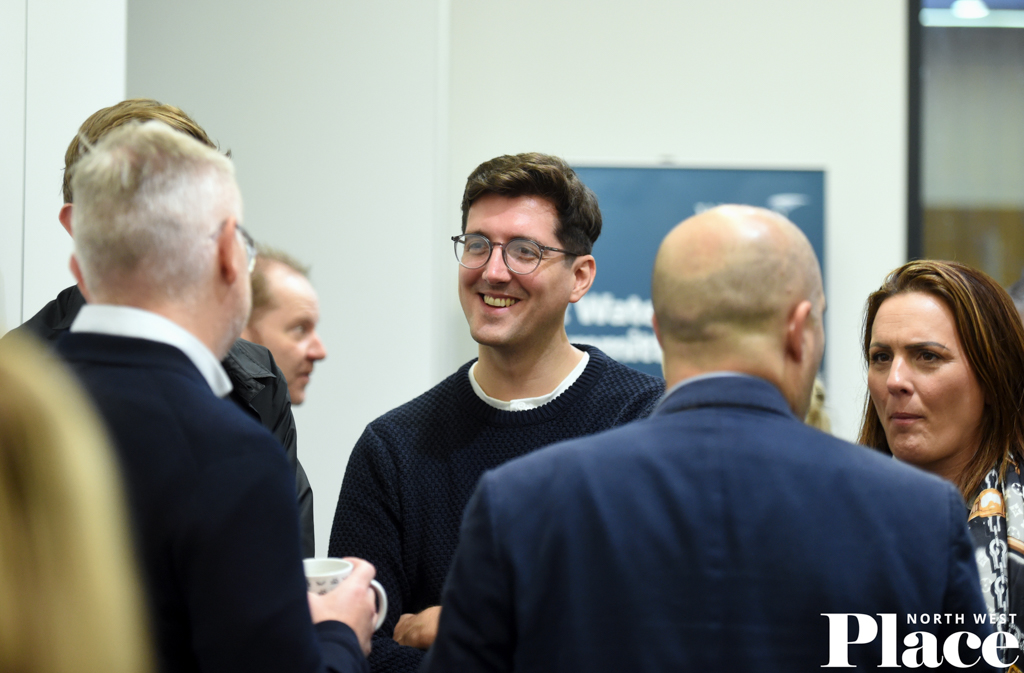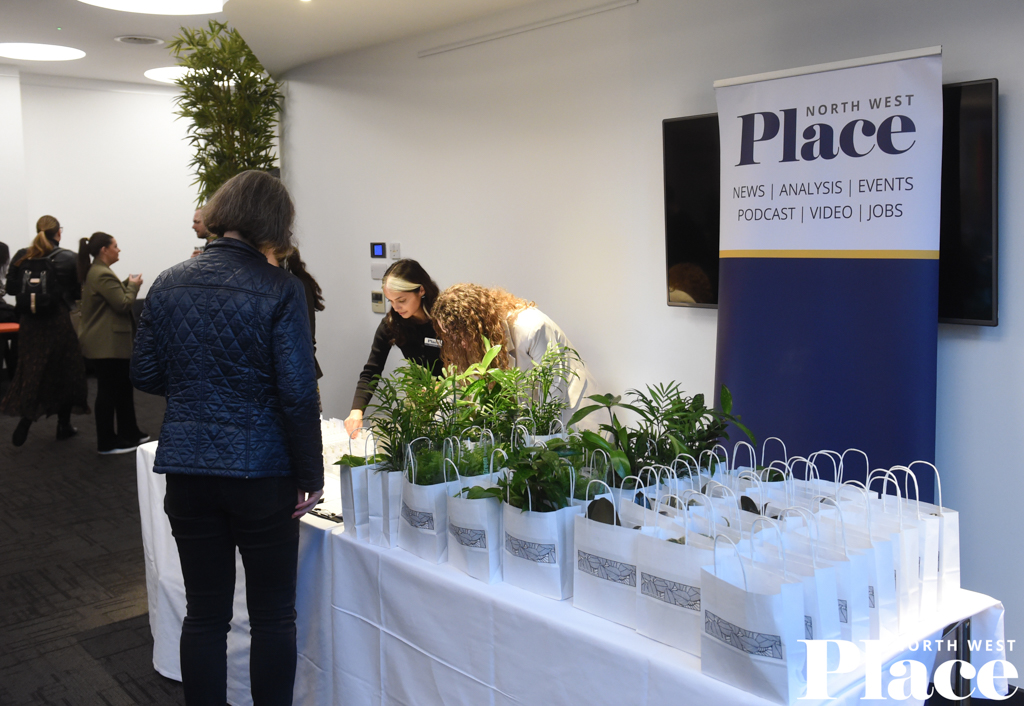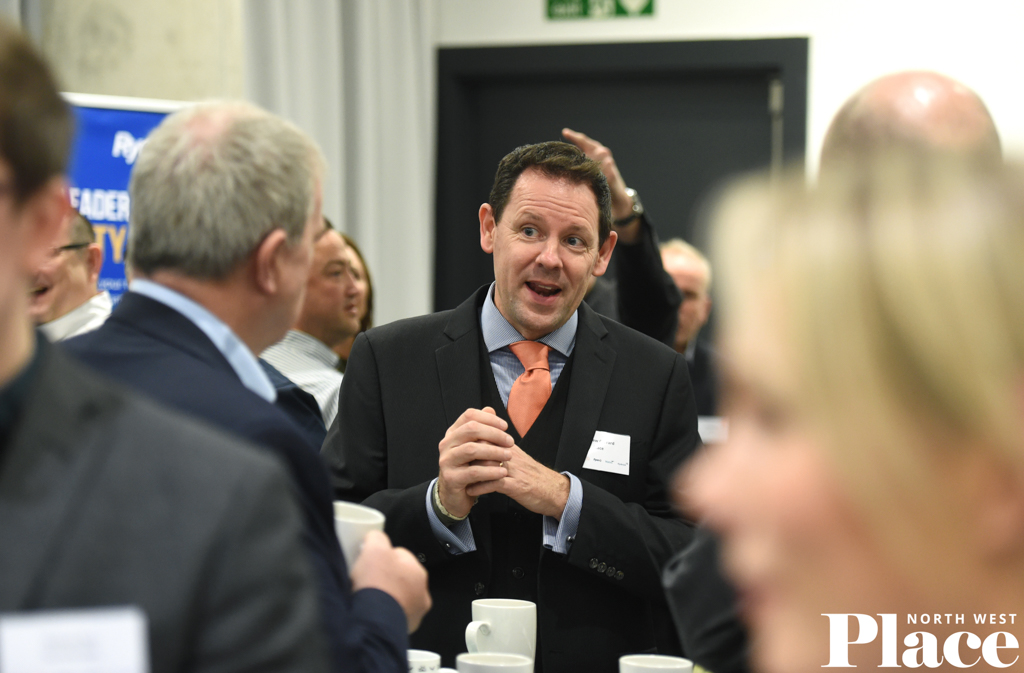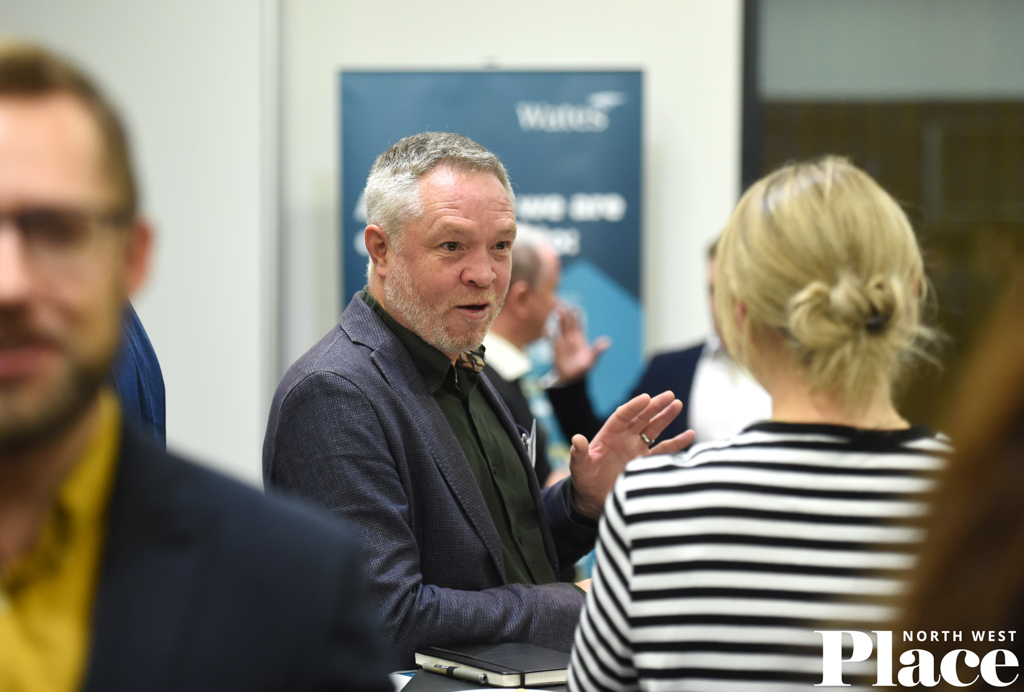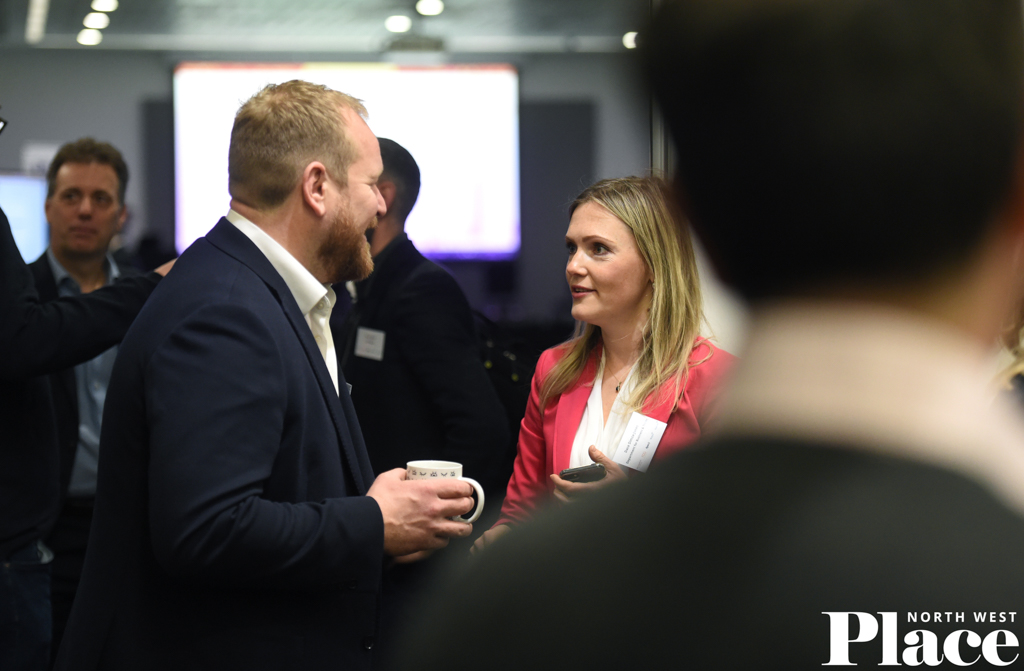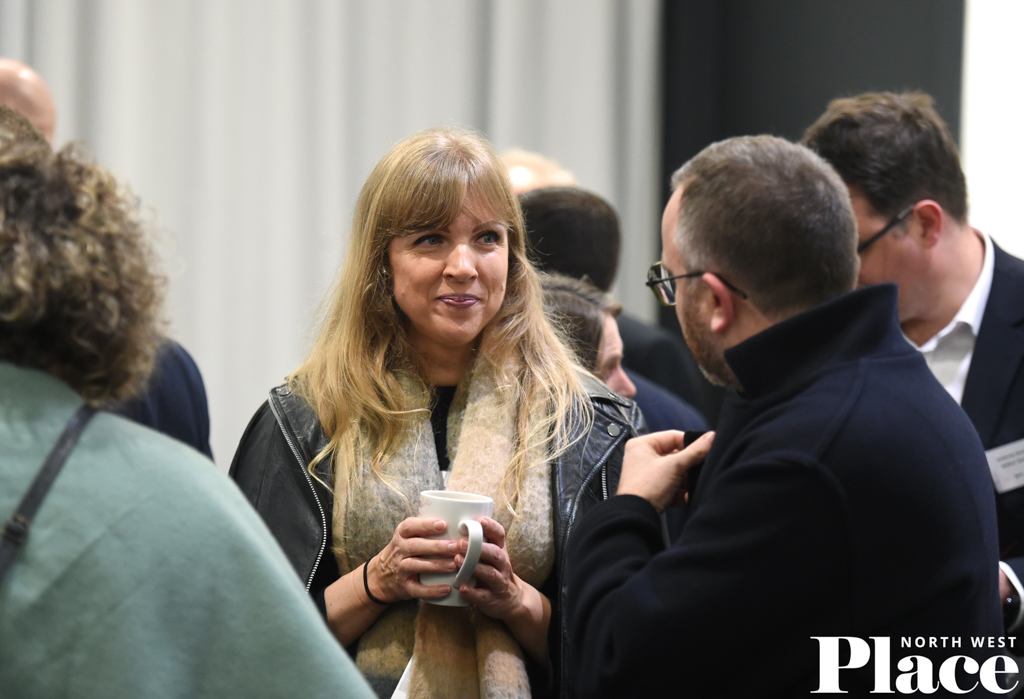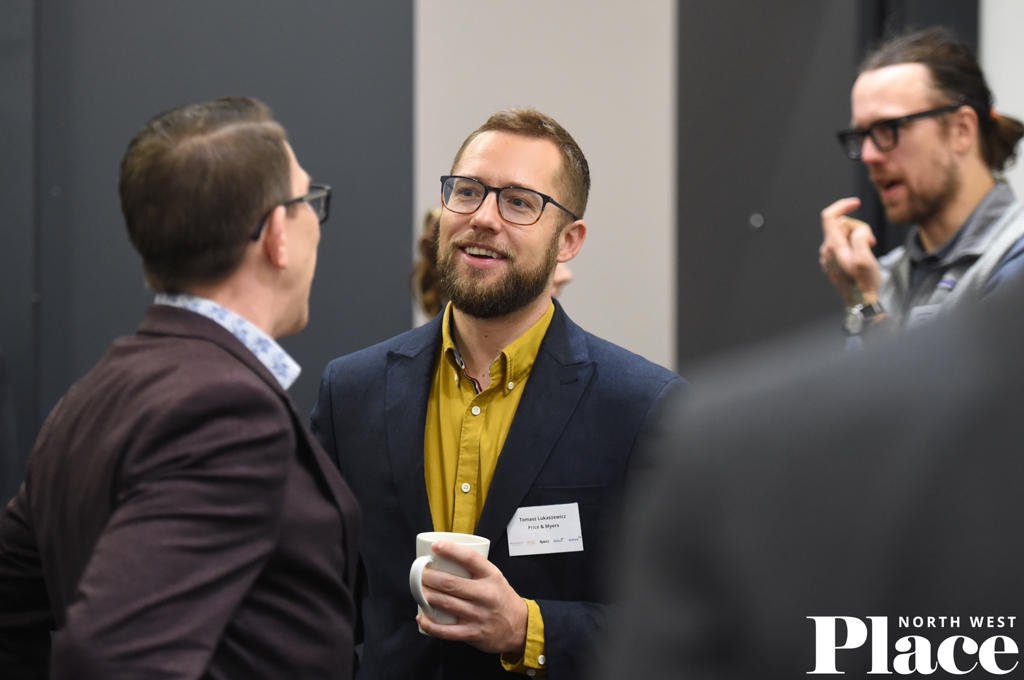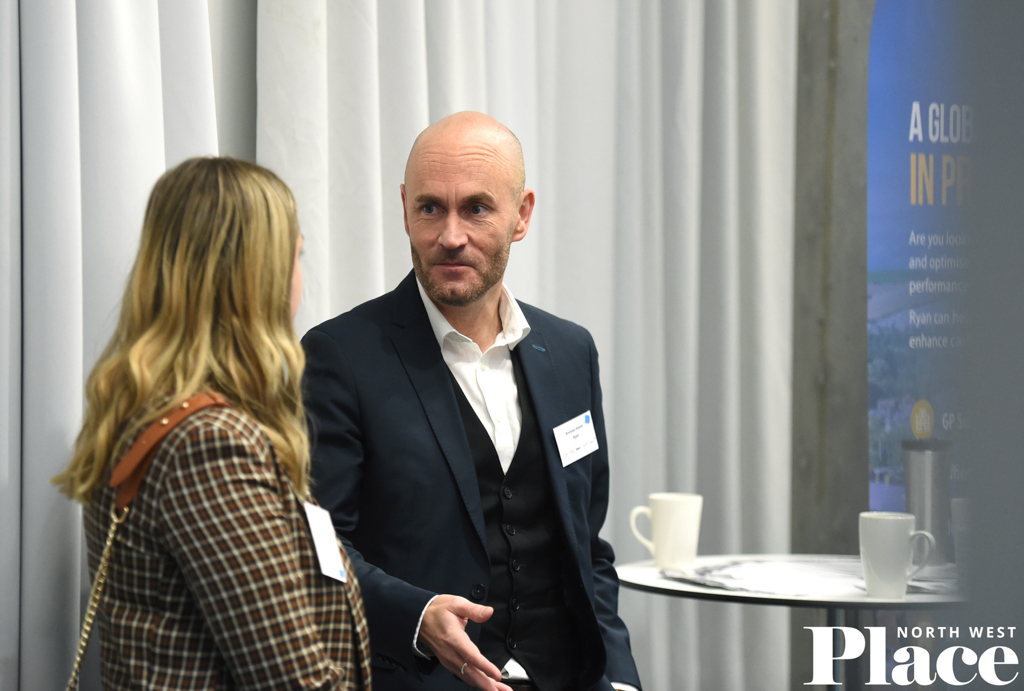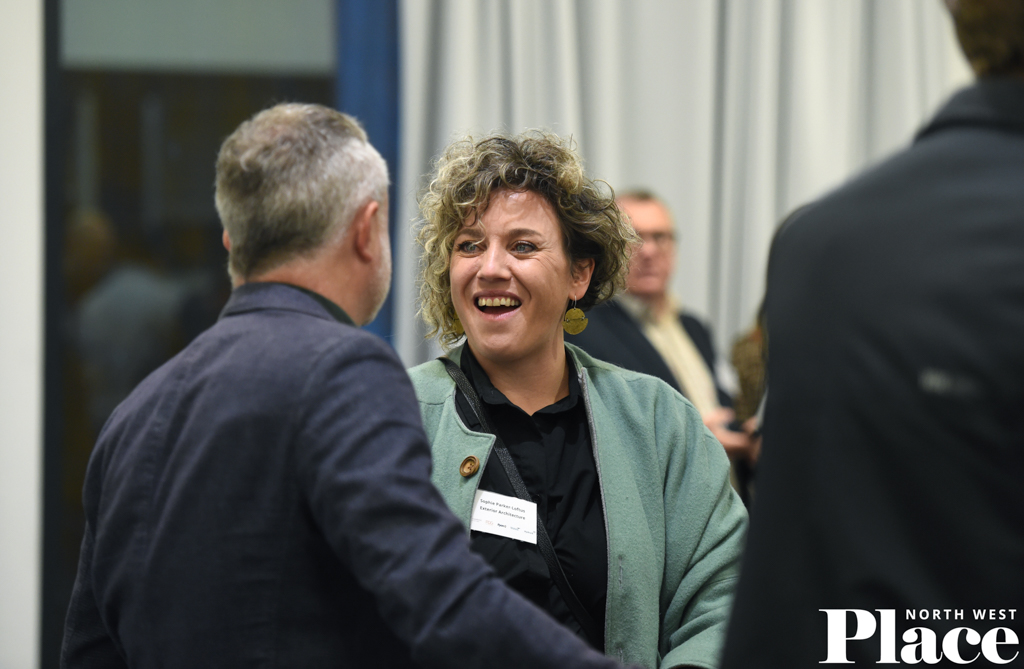Event Summary
Life Sciences Development Update | Photos and summary
More than 200 people gathered at INNSiDE by Melia in Manchester to analyse whether or not the UK can achieve the government’s target to become a life sciences superpower by 2030.
Place North West’s first Labs of the Future: Life Sciences Property Update, hosted by senior reporter Dan Whelan, was a sell out event on 23 November. The half-day conference explored the state of the life sciences market in the North West, how to create greener labs, and the properties that make this sector unique.
The event was sponsored by companies embedded in the life sciences sector – Mills & Reeve, Fairhursts Design Group, Ryan, Wates, and Hydrock.
Rising from the ashes
Stuart Pepper, chief laboratory officer for Cancer Research UK Manchester Institute, shared the strong lessons learned in the creation of The Paterson cancer research centre, sited at The Christie Hospital in Withington.
This tale of ‘rescue to recovery’ started with a devastating fire in 2017, which ruined CRUK’s original building. Six years later, the first experiment took place in the new facility.
“The new building is physically attached to the hospital,” said Pepper, “where patients gift us their tumours and we have them in minutes, rather than hours.”
Describing ‘Team Science’, The Christie, CRUK and the University of Manchester, he detailed a loop of clinical work, research activity, clinical trials, and the patients. Creating the lab space, data centre, offices, and computing facilities needed meant communication was key – and revealed a theme which recurred throughout the Life Sciences event.
“You don’t know what’s in my head,” Pepper said. “And sometimes I don’t know what you need to know until you ask me the right questions.”
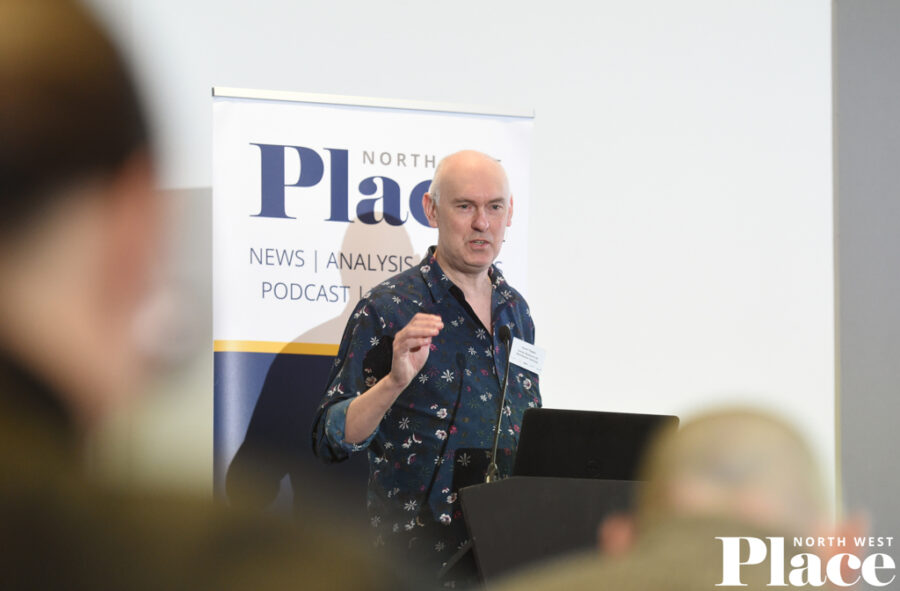
Hearing from the operator’s perspective – CRUK’s Stuart Pepper shared lessons learned from building The Paterson cancer research centre in Manchester. Credit: PNW
The state of the market
Jamie Bottomley, director of Track Real Estate, detailed how many of the sector’s key players had made the North West their European and global headquarters, meaning that the regional cluster of businesses and organisations has made the area globally significant, from Liverpool to Manchester to Sci-Tech Daresbury to Alderley Park.
He said Manchester and the area within its 20-mile radius was ‘holding its own’ against the Golden triangle of Oxford, Cambridge, and London. Speaking specifically about the Oxford Road Corridor in Manchester, Bottomley said: “We have got some really sizeable businesses in less than a square mile.”
He also said his firm was seeing enquiries from those seeking locations outside the Golden Triangle, away from their “aggressive” rents.
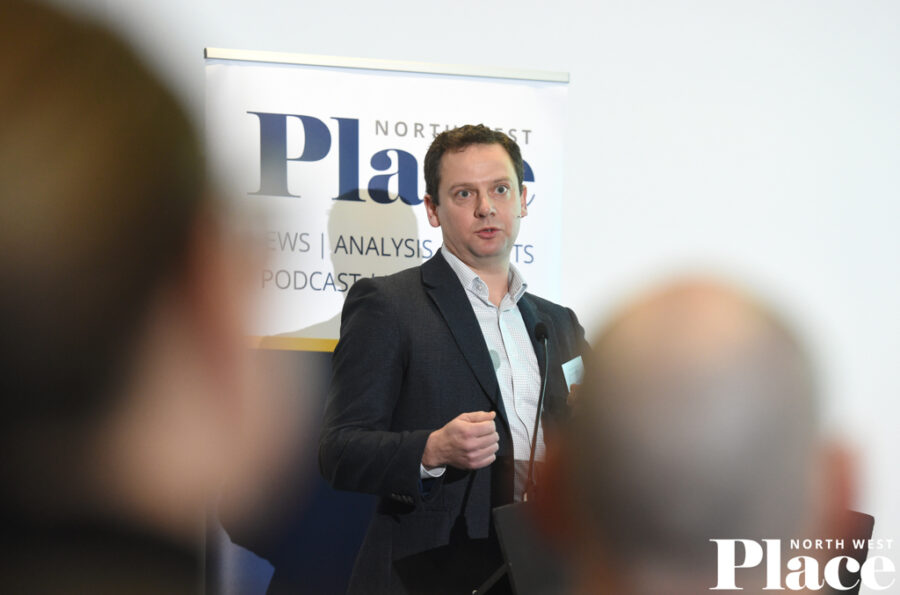
The North West is primed to go after businesses who don’t have the appetite for the supercharged rents of the Golden Triangle, said Track Real Estate’s Jamie Bottomley. Credit: PNW
Will Fogden, senior development manager for Kadans, described how his business was investing in a number of regions. He said the likes of the Oxford Road Corridor were “competing with and complementing the Golden Triangle”.
Fogden highlighted the quality of academia along the Oxford Road Corridor, the research, and the spin-outs. He said there was a real vote of confidence from companies which wanted to stay here.
He added: “Why do people want to live and invest in certain cities? Manchester is a cool and vibrant place. It attracts talent and keeps people here which is helped by accessibility to housing.”
Dace Dimza-Jones, deputy head of Northern Powerhouse life sciences at the Department for Business and Trade, made the point that the North of England needs life sciences’ expertise to address health inequalities in the region. She said there was capacity here to cater for the sector’s needs.
“I do feel like we are in competition with the Golden Triangle,” Dimza-Jones said. “What’s important is that companies place their business where it’s needed the most. As a region we need to promote this.”
When Bottomley showed a slide about future lab supply showing a host of hot Northern sites, there was the biggest flurry of camera phones as event delegates captured his top tips. Bruntwood’s Citylabs and Greenheys, Kadans’ Upper Brook Street, and Airport City North were among the selection, as was Sci-Tech Daresbury.
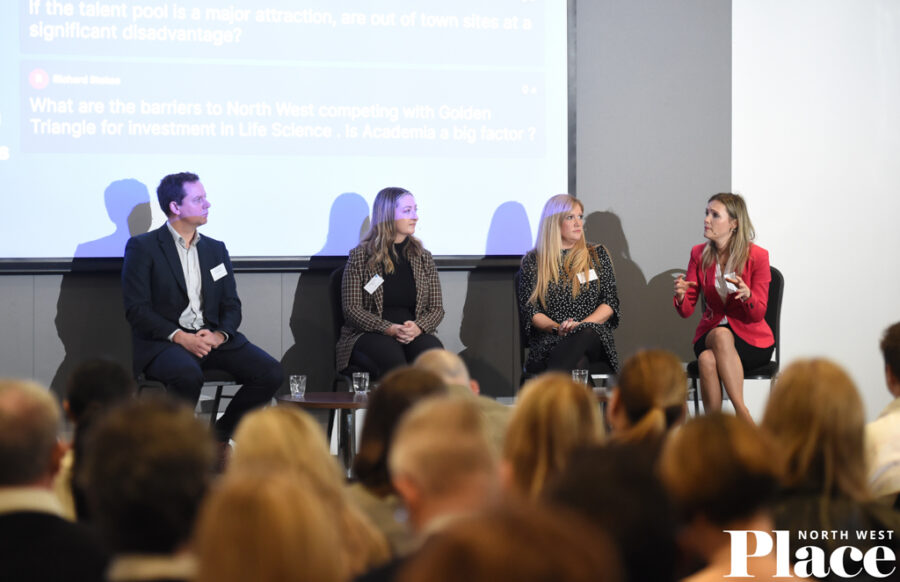
‘What’s important is that companies place their business where it’s needed the most. As a region we need to promote this,’ said Department for Business & Trade’s Dace Dimza-Jones. Credit: PNW
A unique proposition
Alexandra Murphy, principal associate at law firm Mills & Reeve, said the life sciences industry is seeing a property surge that’s different from other sectors due its employees’ needs.
“You can’t have a lab at home,” she said. “There has to be space for them to research and produce a product. That’s what makes life sciences different in terms of supply.”
Dimza-Jones said her teams were driving home the message that the North is prime territory for life sciences companies – from the properties available, along with the funding and investment, to the lifestyle on offer in vibrant cities.
“What makes us different is when companies come to the North we really welcome them, we get the deal done quicker and cheaper with a really personalised approach,” Dimza-Jones said. “We talk about their long-term vision – we don’t just say ‘there is a lab’.”
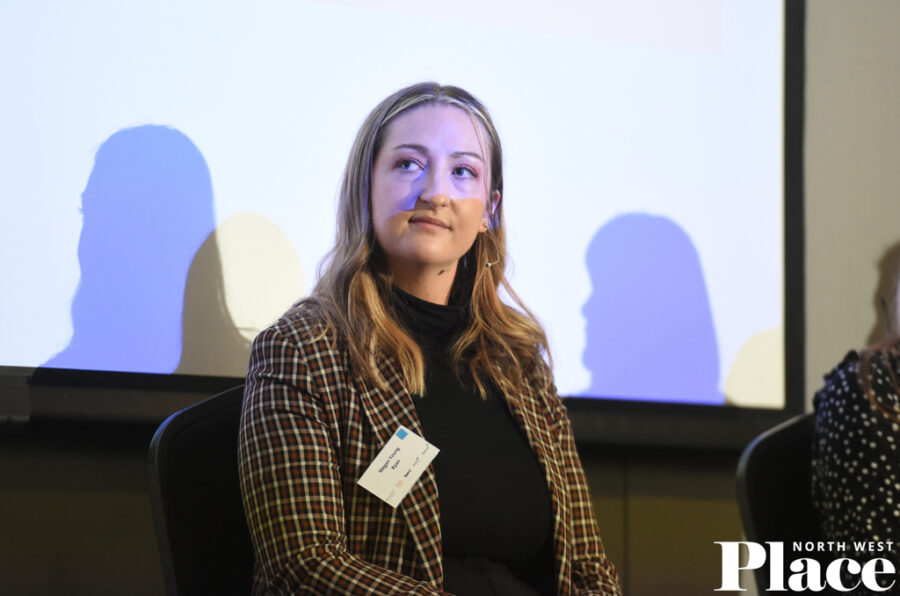
Ryan’s Megan Young said that the Autumn Statement made it clear the government saw potential in the North West. Credit: PNW
Money talks
Place’s Whelan asked Megan Young, consultant for R&D technical at tax specialists Ryan, if the government’s attitude to life sciences was supportive in this week’s budget Autumn Statement, where investment and tax incentives were announced.
She said: “They can see how it would benefit the NHS and individuals. They are really trying to build on that. It’s nice to see Greater Manchester chosen as one of three manufacturing hubs. It’s clear they can see the potential in this region.”
Whelan also said there were 12 mentions of life sciences in this Autumn Statement, while five years ago there were none.
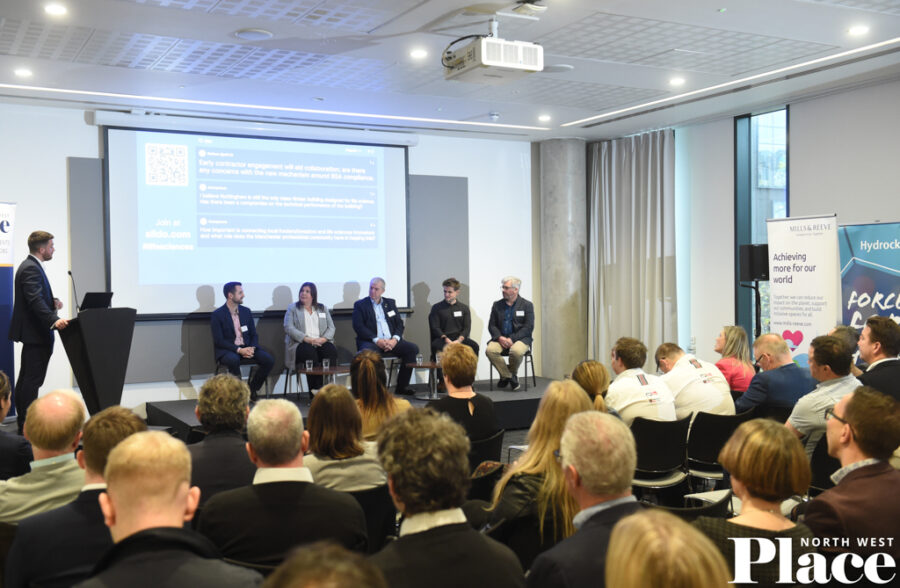
The event’s second panel featured Wates’ Jamie Young, Sciontec’s Rachael Stevens, Hydrock’s Mark Walker, Kadans’ Will Fogden, and Fairhursts Design Group’s Mark Adey. Credit: PNW
Mark Walker, director at Hydrock, said fears that another pandemic could emerge more quickly than the last had focused the political minds. “Covid has made a massive impact,” he said. “The government has seen that. The £520m announced is a nice sum but it’s not a big sum.”
Describing it as a “seismic moment” in North West life sciences market, Whelan asked Mills & Reeve’s Murphy about Greater Manchester Pension Fund becoming an equity partner in Bruntwood SciTech and the moving of traditional office assets into the Bruntwood SciTech life sciences portfolio.
She said: “It’s really showing the commitment outside the Golden Triangle. What they really focused on was the collaborative and shared vision of both entities. Collaboration is fundamental in the life sciences sector. It is a group effort to bring therapies, etc, to the market.
“If I was Mr Investor from abroad, looking at where I can put some money, what investors can see is rents are lower, land values are lower, and things like the SciTech deal give people a lot more confidence in the market.”
Speaking more broadly about government backing, Young added: “How do you get people from the early stages out to that large company status, whether it be through grant funding or other support from the government? It’s that collaborative message we’ve all talked about.”
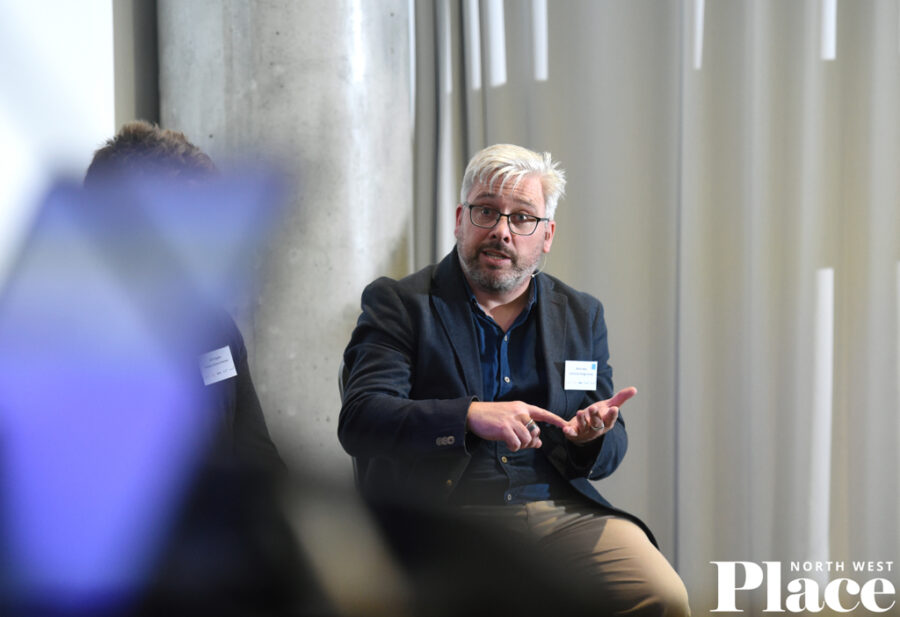
‘We have to design buildings that flex for the things that are not known,’ said Fairhursts Design Group’s Mark Adey. Credit: PNW
Property performance
Sticking with the teamwork theme, Mark Adey, managing director Fairhursts Design Group said circumstance, dedication, and interdisciplinary collaboration made the life sciences work.
He added: “It’s not lightbulb moments; it’s a meeting of minds. We have to design facilities that recognise different people are coming together. There are lessons to be learned from other sectors. We have to design buildings that flex for the things that are not known.”
Adey said building design shouldn’t focus on the first tenants – they need to be adaptable for generations two, three, and beyond. He also said occupational energy was always going to be an issue: “How a scientist works can have a huge effect on a building’s performance.”
He highlighted The Centre for Sustainable Chemistry at the University of Nottingham as a flagship. It has many green features but one of the most simple is the choice of fume cupboards designed to make researchers think about their energy footprint. They have three options, one of which has natural ventilation.
Mills & Reeve’s Murphy had also highlighted some property complications – not least the fact that life science’s properties’ power use can be 30 times that of normal commercial buildings. “Life sciences is a different sell to the market,” Murphy said. “Demand has to be high – these buildings are expensive.”
Fogden said most of Kadans’ lab developments were speculative. When asked about the split between lab and office and wellbeing space in a development, he said they saw 60/40 as the optimum as it futureproofed the building: “It’s a lot easier to change a lab into an office than an office into a lab.”
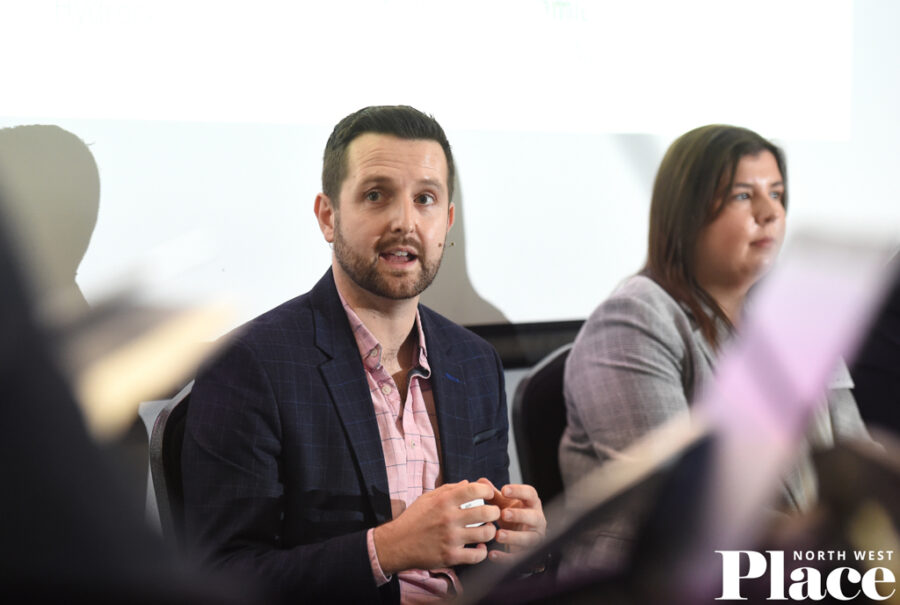
Wates’ Jamie Young spoke about the importance of bringing contractors in early for life sciences projects. Credit: PNW
Jamie Young, principal design manager at Wates, added: “They [speculative developments] are more difficult because you’re not designing for a specific tenant. We would always encourage early contractor involvement because of things like, as Will [Fogden] mentioned, certainty of programme and understanding to bring these designs to life. We bring in our supply chain as a critical element of that.”
Hydrock’s Walker said: “You can’t account for every eventuality but it’s about having an appreciation of what that building can be transformed into.”
In a sector where floor to ceiling heights is important, and the demands for things like removal of specialist waste and high energy use were key considerations, Whelan asked if retrofit could really work in the life sciences sector.
Jamie Young said it was definitely possible. He detailed grade two-listed properties he’d worked on and said: “The challenge is what you find but we are proving if you utilise the fabric and improve the MEP do a full strip out you can make some excellent life science buildings.
“You’ve got the huge obvious benefit of embodied carbon and these retrofit buildings aren’t performing terribly.”
Walker highlighted old department stores as having the potential for retrofit too, something the NHS was considering, and added: “They’ve all got delivery space, it’s a way to regenerate the high street and embodied carbon is already taken care of.”
Liverpool life
Rachael Stevens, head of partnerships at Sciontec, flew the flag for Liverpool’s life sciences skills, using the pandemic response and the upcoming Hemisphere development in Paddington Village as examples.
“We pushed forward our expertise,” Stevens said. “We had labs to let – we had previously struggled to rent out our labs, and Hemisphere was designed in a way so it would be ready to go. When we hit the pandemic, we had no labs left, and we had to respond to that to make sure Hemisphere had over 50% lab buildings to deal with the market enquiries.”
She says the property will also support successful spin-out businesses from the city’s universities.
Asked about announcement of the Liverpool Investment Zone, Stevens said: “In the budget they’ve changed the game completely. £80m is now potentially £150m and the five-year timeline is now 10 years. What that’s going to do, hopefully, is present a lot more opportunity for us to put ourselves on the map. What it unlocks is projects that may have taken five or 10 years are now being pushed forward to next year.”
What’s next?
The Northern leg of HS2 is dead – so what’s the next great Northern transport strategy? And how can local authorities and private companies take their fate into their own hands when it comes to improving infrastructure? Find out at Place’s Transport + Infrastructure 2024 conference on 25 January 2024. Book your ticket.
Click any image to launch gallery


